

What is Cost Assignment?
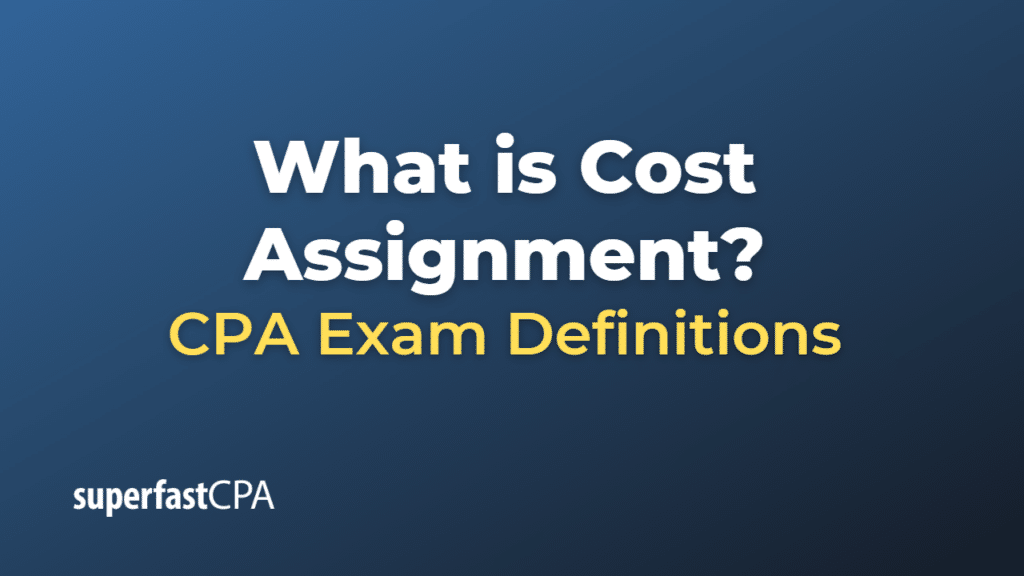
Share This...
Cost assignment.
Cost assignment is the process of associating costs with cost objects, such as products, services, departments, or projects. It encompasses the identification, measurement, and allocation of both direct and indirect costs to ensure a comprehensive understanding of the resources consumed by various cost objects within an organization. Cost assignment is a crucial aspect of cost accounting and management accounting, as it helps organizations make informed decisions about pricing, resource allocation, budgeting, and performance evaluation.
There are two main components of cost assignment:
- Direct cost assignment: Direct costs are those costs that can be specifically traced or identified with a particular cost object. Examples of direct costs include direct materials, such as raw materials used in manufacturing a product, and direct labor, such as the wages paid to workers directly involved in producing a product or providing a service. Direct cost assignment involves linking these costs directly to the relevant cost objects, typically through invoices, timesheets, or other documentation.
- Indirect cost assignment (Cost allocation): Indirect costs, also known as overhead or shared costs, are those costs that cannot be directly traced to a specific cost object or are not economically feasible to trace directly. Examples of indirect costs include rent, utilities, depreciation, insurance, and administrative expenses. Since indirect costs cannot be assigned directly to cost objects, organizations use various cost allocation methods to distribute these costs in a systematic and rational manner. Some common cost allocation methods include direct allocation, step-down allocation, reciprocal allocation, and activity-based costing (ABC).
In summary, cost assignment is the process of associating both direct and indirect costs with cost objects, such as products, services, departments, or projects. It plays a critical role in cost accounting and management accounting by providing organizations with the necessary information to make informed decisions about pricing, resource allocation, budgeting, and performance evaluation.
Example of Cost Assignment
Let’s consider an example of cost assignment at a bakery called “BreadHeaven” that produces two types of bread: white bread and whole wheat bread.
BreadHeaven incurs various direct and indirect costs to produce the bread. Here’s how the company would assign these costs to the two types of bread:
- Direct cost assignment:
Direct costs can be specifically traced to each type of bread. In this case, the direct costs include:
- Direct materials: BreadHeaven purchases flour, yeast, salt, and other ingredients required to make the bread. The cost of these ingredients can be directly traced to each type of bread.
- Direct labor: BreadHeaven employs bakers who are directly involved in making the bread. The wages paid to these bakers can be directly traced to each type of bread based on the time spent working on each bread type.
For example, if BreadHeaven spent $2,000 on direct materials and $1,500 on direct labor for white bread, and $3,000 on direct materials and $2,500 on direct labor for whole wheat bread, these costs would be directly assigned to each bread type.
- Indirect cost assignment (Cost allocation):
Indirect costs, such as rent, utilities, equipment maintenance, and administrative expenses, cannot be directly traced to each type of bread. BreadHeaven uses a cost allocation method to assign these costs to the two types of bread.
Suppose the total indirect costs for the month are $6,000. BreadHeaven decides to use the number of loaves produced as the allocation base , as it believes that indirect costs are driven by the production volume. During the month, the bakery produces 3,000 loaves of white bread and 2,000 loaves of whole wheat bread, totaling 5,000 loaves.
The allocation rate per loaf is:
Allocation Rate = Total Indirect Costs / Total Loaves Allocation Rate = $6,000 / 5,000 loaves = $1.20 per loaf
BreadHeaven allocates the indirect costs to each type of bread using the allocation rate and the number of loaves produced:
- White bread: 3,000 loaves × $1.20 per loaf = $3,600
- Whole wheat bread: 2,000 loaves × $1.20 per loaf = $2,400
After completing the cost assignment, BreadHeaven can determine the total costs for each type of bread:
- White bread: $2,000 (direct materials) + $1,500 (direct labor) + $3,600 (indirect costs) = $7,100
- Whole wheat bread: $3,000 (direct materials) + $2,500 (direct labor) + $2,400 (indirect costs) = $7,900
By assigning both direct and indirect costs to each type of bread, BreadHeaven gains a better understanding of the full cost of producing each bread type, which can inform pricing decisions, resource allocation, and performance evaluation.
Other Posts You'll Like...

REG CPA Practice Questions Explained: Understanding Losses from Hobbies and the Sale of Personal-Use Assets

REG CPA Practice Questions Explained: How to Calculate the QBI Deduction
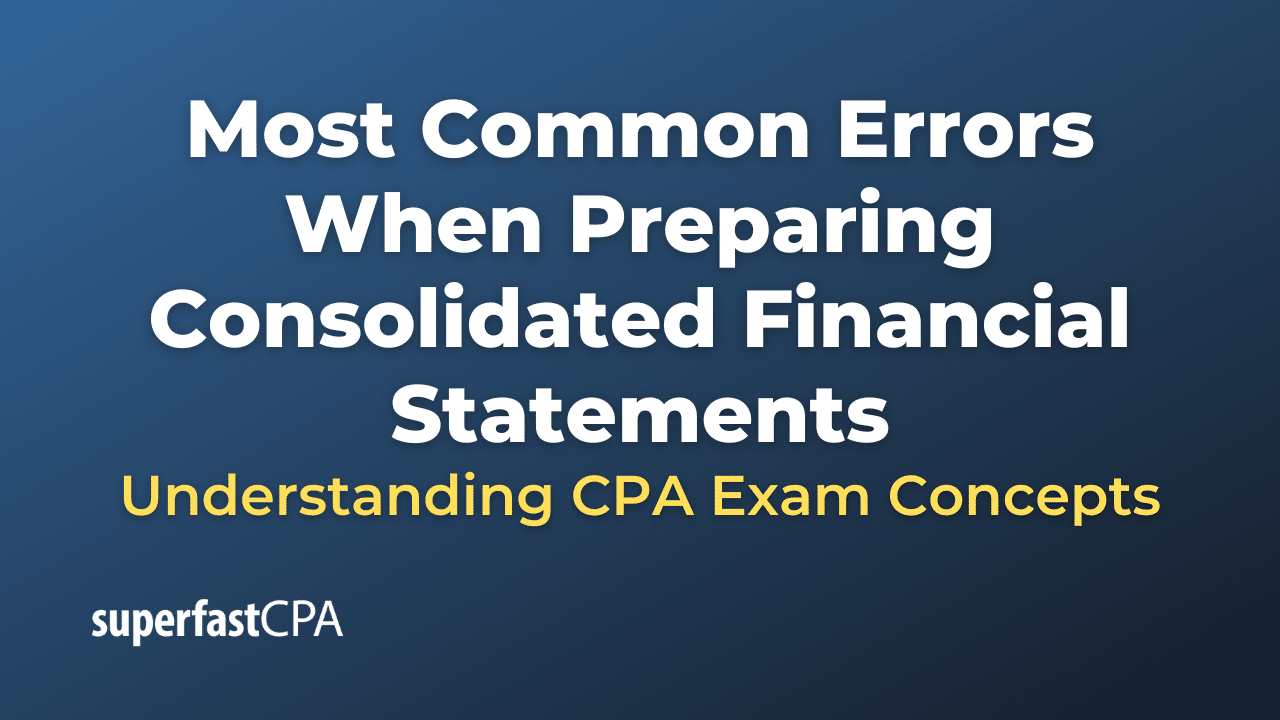
Most Common Errors When Preparing Consolidated Financial Statements

How are Joint Ventures Treated in Consolidated Financial Statements?

How to Treat Foreign Subsidiaries in Consolidated Financial Statements?
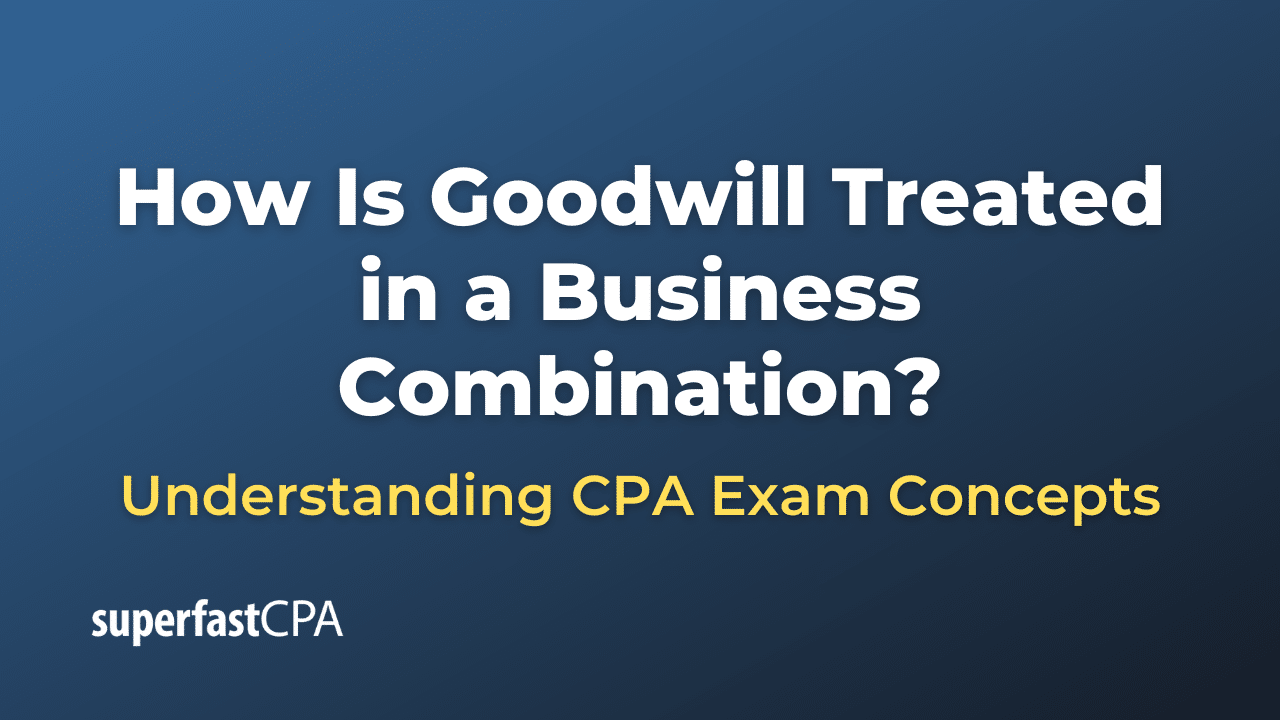
How Is Goodwill Treated in a Business Combination?
Helpful links.
- Learn to Study "Strategically"
- How to Pass a Failed CPA Exam
- Samples of SFCPA Study Tools
- SuperfastCPA Podcast

Helicopter Pilot to CPA: How Chase Passed His CPA Exams

How Josh Passed His CPA Exams Using Shorter Study Sessions

The Changes That Helped Marc Pass His CPA Exams After Failing 6 Times

The CPA Study Tweaks Gabi Used to Pass Her CPA Exams

How Skylar Went From a Psychology Major to Becoming a CPA

How Dalton Is Passing Exams by Making His CPA Study a Lifestyle
Want to pass as fast as possible, ( and avoid failing sections ), watch one of our free "study hacks" trainings for a free walkthrough of the superfastcpa study methods that have helped so many candidates pass their sections faster and avoid failing scores....

Make Your Study Process Easier and more effective with SuperfastCPA
Take Your CPA Exams with Confidence
- Free "Study Hacks" Training
- SuperfastCPA PRO Course
- SuperfastCPA Review Notes
- SuperfastCPA Audio Notes
- SuperfastCPA Quizzes
Get Started
- Free "Study Hacks Training"
- Read Reviews of SuperfastCPA
- Busy Candidate's Guide to Passing
- Subscribe to the Podcast
- Purchase Now
- Nate's Story
- Interviews with SFCPA Customers
- Our Study Methods
- SuperfastCPA Reviews
- CPA Score Release Dates
- The "Best" CPA Review Course
- Do You Really Need the CPA License?
- 7 Habits of Successful Candidates
- "Deep Work" & CPA Study
- Cost Classifications
- Relevant Cost of Material
- Manufacturing Overhead Costs
- Conversion Costs
- Quality Costs
- Revenue Expenditure
- Product Cost vs Period Cost
- Direct Costs and Indirect Costs
- Prime Costs and Conversion Costs
- Relevant vs Irrelevant Costs
- Avoidable and Unavoidable Costs
- Cost Allocation
- Joint Products
- Accounting for Joint Costs
- Service Department Cost Allocation
- Repeated Distribution Method
- Simultaneous Equation Method
- Specific Order of Closing Method
- Direct Allocation Method
Cost allocation is the process by which the indirect costs are distributed among different cost objects such as a project, a department, a branch, a customer, etc. It involves identifying the cost object, identifying and accumulating the costs that are incurred and assigning them to the cost object on some reasonable basis.
Cost allocation is important for both pricing and planning and control decisions. If costs are not accurately calculated, a business might never know which products are making money and which ones are losing money. If cost are mis-allocated, a business may be charging wrong price to its customers and/or it might be wasting resources on products that are wrongly categorized as profitable.
Cost allocation is a sub-process of cost assignment , which is the overall process of finding total cost of a cost object. Cost assignment involves both cost tracing and cost allocation. Cost tracing encompasses finding direct costs of a cost object while the cost allocation is concerned with indirect cost charge.
Steps in cost allocation process
Typical cost allocation mechanism involves:
- Identifying the object to which the costs have to be assigned,
- Accumulating the costs in different pools,
- Identifying the most appropriate basis/method for allocating the cost.
Cost object
A cost object is an item for which a business need to separately estimate cost.
Examples of cost object include a branch, a product line, a service line, a customer, a department, a brand, a project, etc.
A cost pool is the account head in which costs are accumulated for further assignment to cost objects.
Examples of cost pools include factory rent, insurance, machine maintenance cost, factory fuel, etc. Selection of cost pool depends on the cost allocation base used. For example if a company uses just one allocation base say direct labor hours, it might use a broad cost pool such as fixed manufacturing overheads. However, if it uses more specific cost allocation bases, for example labor hours, machine hours, etc. it might define narrower cost pools.
Cost driver
A cost driver is any variable that ‘drives’ some cost. If increase or decrease in a variable causes an increase or decrease is a cost that variable is a cost driver for that cost.
Examples of cost driver include:
- Number of payments processed can be a good cost driver for salaries of Accounts Payable section of accounting department,
- Number of purchase orders can be a good cost driver for cost of purchasing department,
- Number of invoices sent can be a good cost driver for cost of billing department,
- Number of units shipped can be a good cost driver for cost of distribution department, etc.
While direct costs are easily traced to cost objects, indirect costs are allocated using some systematic approach.
Cost allocation base
Cost allocation base is the variable that is used for allocating/assigning costs in different cost pools to different cost objects. A good cost allocation base is something which is an appropriate cost driver for a particular cost pool.
T2F is a university café owned an operated by a student. While it has plans for expansion it currently offers two products: (a) tea & coffee and (b) shakes. It employs 2 people: Mr. A, who looks after tea & coffee and Mr. B who prepares and serves shakes & desserts.
Its costs for the first quarter are as follows:
Total tea and coffee sales and shakes sales were $50,000 & $60,000 respectively. Number of customers who ordered tea or coffee were 10,000 while those ordering shakes were 8,000.
The owner is interested in finding out which product performed better.
Salaries of Mr. A & B and direct materials consumed are direct costs which do not need any allocation. They are traced directly to the products. The rest of the costs are indirect costs and need some basis for allocation.
Cost objects in this situation are the products: hot beverages (i.e. tea & coffee) & shakes. Cost pools include rent, electricity, music, internet and wi-fi subscription and magazines.
Appropriate cost drivers for the indirect costs are as follows:
Since number of customers is a good cost driver for almost all the costs, the costs can be accumulated together to form one cost pool called manufacturing overheads. This would simply the cost allocation.
Total manufacturing overheads for the first quarter are $19,700. Total number of customers who ordered either product are 18,000. This gives us a cost allocation base of $1.1 per customer ($19,700/18,000).
A detailed cost assignment is as follows:
Manufacturing overheads allocated to Tea & Cofee = $1.1×10,000
Manufacturing overheads allocated to Shakes = $1.1×8,000
by Irfanullah Jan, ACCA and last modified on Jul 22, 2020
Related Topics
- Cost Behavior
All Chapters in Accounting
- Intl. Financial Reporting Standards
- Introduction
- Accounting Principles
- Business Combinations
- Accounting Cycle
- Financial Statements
- Non-Current Assets
- Fixed Assets
- Investments
- Revenue Recognition
- Current Assets
- Receivables
- Inventories
- Shareholders' Equity
- Liability Accounts
- Accounting for Taxes
- Employee Benefits
- Accounting for Partnerships
- Financial Ratios
- Cost Accounting Systems
- CVP Analysis
- Relevant Costing
- Capital Budgeting
- Master Budget
- Inventory Management
- Cash Management
- Standard Costing
Current Chapter
XPLAIND.com is a free educational website; of students, by students, and for students. You are welcome to learn a range of topics from accounting, economics, finance and more. We hope you like the work that has been done, and if you have any suggestions, your feedback is highly valuable. Let's connect!
Copyright © 2010-2024 XPLAIND.com
Our Recommendations
- Best Small Business Loans for 2024
- Businessloans.com Review
- Biz2Credit Review
- SBG Funding Review
- Rapid Finance Review
- 26 Great Business Ideas for Entrepreneurs
- Startup Costs: How Much Cash Will You Need?
- How to Get a Bank Loan for Your Small Business
- Articles of Incorporation: What New Business Owners Should Know
- How to Choose the Best Legal Structure for Your Business
Small Business Resources
- Business Ideas
- Business Plans
- Startup Basics
- Startup Funding
- Franchising
- Success Stories
- Entrepreneurs
- The Best Credit Card Processors of 2024
- Clover Credit Card Processing Review
- Merchant One Review
- Stax Review
- How to Conduct a Market Analysis for Your Business
- Local Marketing Strategies for Success
- Tips for Hiring a Marketing Company
- Benefits of CRM Systems
- 10 Employee Recruitment Strategies for Success
- Sales & Marketing
- Social Media
- Best Business Phone Systems of 2024
- The Best PEOs of 2024
- RingCentral Review
- Nextiva Review
- Ooma Review
- Guide to Developing a Training Program for New Employees
- How Does 401(k) Matching Work for Employers?
- Why You Need to Create a Fantastic Workplace Culture
- 16 Cool Job Perks That Keep Employees Happy
- 7 Project Management Styles
- Women in Business
- Personal Growth
- Best Accounting Software and Invoice Generators of 2024
- Best Payroll Services for 2024
- Best POS Systems for 2024
- Best CRM Software of 2024
- Best Call Centers and Answering Services for Busineses for 2024
- Salesforce vs. HubSpot: Which CRM Is Right for Your Business?
- Rippling vs Gusto: An In-Depth Comparison
- RingCentral vs. Ooma Comparison
- Choosing a Business Phone System: A Buyer’s Guide
- Equipment Leasing: A Guide for Business Owners
- HR Solutions
- Financial Solutions
- Marketing Solutions
- Security Solutions
- Retail Solutions
- SMB Solutions

Online only.

What Is Cost Allocation?

Table of Contents
For your business to make money, you must charge prices that not only cover your expenses, but also provide a profit. Cost allocation is the process of identifying and assigning costs to the cost objects in your business, such as products, a project, or even an entire department or individual company branch.
While a detailed cost allocation report may not be vital for extremely small businesses, such as a teen’s lawn service, more complex businesses require the process of cost allocation to ensure profitability and productivity.
In short, if you can assign a cost to any part of your business, it’s considered a cost object.
What is cost allocation?
Cost allocation is the method business owners use to calculate profitability for the purpose of financial reporting . To ensure the business’s finances are on track, costs are separated, or allocated, into different categories based on the area of the business they impact.
For instance, cost allocation for a small clothing boutique would include the costs of materials, shipping and marketing. Calculating these costs consistently would help the store owner ensure that profits from sales are higher than the costs of owning and running the store. If not, the owner could easily pinpoint where to raise prices or cut expenses .
For a larger company, this process would be applied to each department or individual location. Many companies use cost allocation to determine which areas receive bonuses annually.
Regardless of your business size, you’ll want to review and choose the best accounting software to help this process run as smoothly as possible.
Types of costs
In the boutique example above, the process of cost allocation is pretty simple. For larger businesses, however, many more costs are involved. These costs break down into seven categories.
- Direct costs: These expenses are directly related to a product or service. In your business’s financial statements, these costs can be linked to items sold. For a small clothing store, this might include the cost of inventory.
- Direct labor: This cost category includes expenses directly related to the employee production of items or services your business sells. Direct labor costs include payroll for employees involved in making the items your business sells.
- Direct materials: As the name suggests, this category includes costs related to the resources used to manufacture a finished product. Direct materials include fabric to make clothing, or the glass used in building tables.
- Indirect costs: These expenses are not directly related to a product or service, but necessary to create the product or service. Indirect costs include payroll for those who work in operations. It also lists costs for materials you use in such small quantities that their costs are easy to overlook.
- Manufacturing overhead: This category includes warehouse costs, and any other expenses directly related to manufacturing the products sold. Manufacturing overhead costs include payroll for warehouse managers, as well as warehouse expenses such as rent and utilities.
- Overhead costs: These include expenses that support the company as a whole but are not directly related to production. Some examples of overhead costs are marketing, operations and utilities for a storefront.
- Product costs: Also called “manufacturing costs” or “total costs,” this category includes expenses for making or acquiring the product you sell. All manufacturing overhead costs are also listed in this category.
Example of cost allocation
To better explain the process of cost allocation and why it’s necessary for businesses, let’s look at an example.
Dave owns a business that manufactures eyeglasses. In January, Dave’s overhead costs totaled $5,000. In the same month, he produced 3,000 eyeglasses with $2 in direct labor per product. Direct materials for each pair of eyeglasses totaled $5.
Here’s what cost allocation would look like for Dave:
Overhead: $5,000 ÷ $3,000 = $1.66 per pair
Direct costs:
- Direct materials: $5 per pair
- Direct labor: $2 per pair
- Overhead: $1.66 per pair
- Total cost: $8.66 per pair
As you can see, without cost allocation, Dave would not have made a profit from his sales. Larger companies would apply this same process to each department and product to ensure sufficient sales goals. [Read related article: How to Set Achievable Business Goals ]
How to allocate costs
Cost objects vary by business type. The cost allocation process, however, consists of the same steps regardless of what your company produces.
1. Identify cost objects.
To begin allocating costs, you’ll need to list the cost objects of your business. Remember that anything within your business that generates an expense is a cost object. Review each product line, project and department to ensure you’ve gathered all cost objects.
2. Create a cost pool.
Next, gather a detailed list of all business costs. It’s a good idea to categorize the costs based on the reason for each amount. Categories should cover utilities, insurance , square footage and any other expenses your business incurs.
3. Allocate costs.
Now that you’ve listed cost objects and created a cost pool, you’re ready to allocate costs. As demonstrated in the example above, add up the costs of each cost object. At a glance, your report should justify all expenses related to your business. If costs don’t add up correctly, use the list to determine where you can make adjustments to get back on track.
What is cost allocation used for?
Cost allocation is used for many reasons, both externally and internally. Reports created by this process are great resources for making business decisions , monitoring productivity and justifying expenses.
External reports are usually calculated based on generally accepted accounting principles (GAAP) . Under GAAP, expenses can only be reported in financial statements during the time period the associated revenue is earned. For this reason, overhead costs are divided and allocated to individual inventory items. When the inventory is sold, the overhead is expensed as a portion of the cost of goods sold (COGS) .
Internal financial data, on the other hand, is usually reported using activity-based costing (ABC). This method assigns all products to the overhead expenses they caused. This process may not include all overhead costs related to operations and manufacturing.
Cost allocation reports show which cost objects incur the most expenses for your business and which products or departments are most profitable. These findings can be a great resource to pair with employee monitoring software when evaluating productivity. If you determine that a cost object is not as profitable as it should be, you should do further evaluations on productivity. If another cost object is found to exceed expectations, you can use the report to find staff members who deserve recognition for their contributions to the company.
Recognition is one of the best ways to keep employees motivated .
What is a cost driver?
A cost driver is a variable that can change the costs related to a business activity. The number of invoices issued, the number of employee hours worked, and the total of purchase orders are all examples of cost drivers in cost accounting .
While cost objects are related to the specific process or product incurring the costs, a cost driver sheds light on the reason for the incurred cost amounts. These items can take different forms – including fixed costs, such as the initial fees during the startup phase . Cost drivers give a bird’s-eye view of the entire company and how each department operates.
It’s common for only one cost driver to be used with very small businesses , since they are focused on using minimal reporting to estimate overhead costs.
Benefits of cost allocation
- It simplifies decision-making. Cost allocation gives you a detailed overview of how your business expenses are used. From this perspective, you can determine which products and services are profitable, and which departments are most productive.
- It assists in staff evaluation. You can also use cost allocation to assess the performance of different departments. If a department is not profitable, the staff productivity may need improvement. Cost allocation can also be an indicator of departments that exceed expectations and deserve recognition. Awards and recognition are a great way to motivate staff and, in turn, increase productivity. [Read related article: Best Business Productivity Apps ]
Even if you operate a very small business, it’s a great idea to learn the process of cost allocation, especially if you anticipate expansion in the future. Since the method can be complex, it’s ideal to use accounting software as an aid. Whether you choose to start allocating costs on your own with software or hire a professional accountant , it’s a process no business owner can afford to overlook.

Building Better Businesses
Insights on business strategy and culture, right to your inbox. Part of the business.com network.
Cost assignment model for electrical transmission system expansion: an approach through the Kernel theory
Ieee account.
- Change Username/Password
- Update Address
Purchase Details
- Payment Options
- Order History
- View Purchased Documents
Profile Information
- Communications Preferences
- Profession and Education
- Technical Interests
- US & Canada: +1 800 678 4333
- Worldwide: +1 732 981 0060
- Contact & Support
- About IEEE Xplore
- Accessibility
- Terms of Use
- Nondiscrimination Policy
- Privacy & Opting Out of Cookies
A not-for-profit organization, IEEE is the world's largest technical professional organization dedicated to advancing technology for the benefit of humanity. © Copyright 2024 IEEE - All rights reserved. Use of this web site signifies your agreement to the terms and conditions.
- Author: Sander den Hartog
- Date: 30-01-2023
The importance of cost models in decision making
By Doug Hicks, Director, PACE
Individuals use models to understand the phenomena around them. The late Dr. Alfred Oxenfeldt, a long-time authority on decision economics, put it this way, “The brain works by constructing an internal version of the outside world. Its conclusions reflect that internal version rather than the actual outside world; the validity of its conclusions depends largely upon whether these internal representations accurately mirror the outside world” (italics mine).
Most phenomena encountered by human beings are far too complex for them to completely comprehend. Whether it is the way the economy works, the way diet and behavior effect health, or the way the universe was born and functions, we cannot completely comprehend all of the complexities involved. Yet we must still function in a world where these phenomena exist. To do so we create “models” of those phenomena that incorporate what we perceive to be its most important parts and the relationships between those parts.
John Kenneth Galbraith and Milton Friedman are both considered eminent 20th Century economists. Yet in their work, they championed very different models for managing the national and world economy. During the 1930s, the Roosevelt administration believed in an economic model similar to Galbraith’s. As a result, the Roosevelt administration’s decisions were based on a Galbraith-like “internal version of the outside world.” During the 1980s, the Reagan administration believed in a model more like Friedman’s. As a consequence, the Reagan administration’s decisions were based a on Friedman-like “internal version of the outside world.” The laws of economics did not change, the models used to function in a world where those laws operate changed. It was each administration’s model of economic phenomena that determined its behavior, not the phenomena themselves.
Understanding that it is not reality that determines our behavior but our models of that reality, we must then examine the second half of Alfred Oxenfeldt’s statement, “…the caliber of our decisions reflects the quality and validity of our models.”
Imagine the individual whose model believes that three packs of cigarettes, two dozen donuts and a fifth of bourbon each day are essential to good health. Imagine NASA’s chances of success if the agency held to Ptolemy’s model of the universe. Imagine the success of the medical profession if they still “bled” patients to cure their diseases. Imagine civilization if we still believed that burning witches kept evil spirits from invading our villages, that sacrificing children appeased the gods, or that conducting trials by combat led to a fair and just society.
Today we know that such models would not lead to quality decisions, but at various times in the past they were considered valid. The caliber of the decisions made by people who used these models was very low indeed because their models were of poor quality and fundamentally invalid – just ask George Washington about blood-letting.
Cost models make better business decisions
The same holds true in business. Organizations with good models tend to make better decisions and be more successful than those with low quality, invalid models. One of the most important of the models that exists within any organization is its economic cost model . Not its cost accounting model – its economic cost model. An economic cost model is the model that describes the causality-based connections between an organization’s products, services, markets and customers, its activities and processes, and the costs it incurs. This is the model that provides the basis for accurately measuring product and service costs, the incremental costs related to specific business decisions, the costs required for performing key business processes, the costs related to specific customers, markets, and product lines, the costs of managing the entire supply chain, as well as the cost of administering the overall business.
Despite the fact that the two have little in common, most organizations use their cost accounting model as their economic cost model. There are innumerable differences between these two models – too many to go into in a short blog – but most exist because cost accounting is backward looking, uses expense information as defined by financial accounting rules and regulations, is designed to measure an organization’s overall results, not those related to individual products, services, customers or markets, and is based on correlation, not causality. An economic cost model is forward looking, uses economic costs instead of financial accounting costs, can be used to accurately project costs for budgets, plans and incremental analyses, is designed to measure costs at the product, service, customer and market level, and is based on causality.
The qualities of an effective cost model
To be effective, an organization’s economic cost model must 1) be based on causality – costs must be driven, traced and attributed to activities based on cause-and-effect relationships – the stronger and more measurable the relationships, the better, 2) be predictive – business decisions impact the future, not the past, and most types of business decisions require the measurement of incremental costs, so the model must be able to accurately project the cost outcomes of decisions and actions under consideration as well as anticipate future cost assignment rates, and 3) incorporate economic costs and not just parrot the costs included in historical financial statements. The cost of preserving the organization’s capital base should be substituted for depreciation, costs like product development, marketing, R&D and employee development must be divided into expenses required to maintain the business and those invested in growing the business, and the cost of capital must be included.
“Good decisions require good models,” and the low caliber of information provided by the typical cost accounting model will surely result in inappropriate decisions and ineffective actions.
Source citation: PACE PACE and CostPerform are working together to expand the world of Cost Management.

Discover what CostPerform can do for your enterprise organization
Download our brochure.
+1 410 385 5325 [email protected]
CostPerform The Netherlands
+31 (0) 85 023 2114 [email protected] ACADEMY SUPPORT
- Time-driven Activity-Based Costing
- Capacity Management
- Multi-dimensional costing
- Technology Business Management
- Regulatory reporting
- Customer profitability
- Financial Institution
- IT services
- Manufacturing and Logistics
- Download brochure
- Online demo
- Download price list
- Become a partner
- Support Center
- Subscribe to our newsletter
ISO 27001 certified
© costperform 2024 | privacy policy | cookie statement | cookie preferences | terms of use.
- Search Search Please fill out this field.
- Business Essentials
Assignment Method: Examples of How Resources Are Allocated
:max_bytes(150000):strip_icc():format(webp)/wk_headshot_aug_2018_02__william_kenton-5bfc261446e0fb005118afc9.jpg)
What Is the Assignment Method?
The assignment method is a way of allocating organizational resources in which each resource is assigned to a particular task. The resource could be monetary, personnel , or technological.
Understanding the Assignment Method
The assignment method is used to determine what resources are assigned to which department, machine, or center of operation in the production process. The goal is to assign resources in such a way to enhance production efficiency, control costs, and maximize profits.
The assignment method has various applications in maximizing resources, including:
- Allocating the proper number of employees to a machine or task
- Allocating a machine or a manufacturing plant and the number of jobs that a given machine or factory can produce
- Assigning a number of salespersons to a given territory or territories
- Assigning new computers, laptops, and other expensive high-tech devices to the areas that need them the most while lower priority departments would get the older models
Companies can make budgeting decisions using the assignment method since it can help determine the amount of capital or money needed for each area of the company. Allocating money or resources can be done by analyzing the past performance of an employee, project, or department to determine the most efficient approach.
Regardless of the resource being allocated or the task to be accomplished, the goal is to assign resources to maximize the profit produced by the task or project.
Example of Assignment Method
A bank is allocating its sales force to grow its mortgage lending business. The bank has over 50 branches in New York but only ten in Chicago. Each branch has a staff that is used to bring in new clients.
The bank's management team decides to perform an analysis using the assignment method to determine where their newly-hired salespeople should be allocated. Given the past performance results in the Chicago area, the bank has produced fewer new clients than in New York. The fewer new clients are the result of having a small market presence in Chicago.
As a result, the management decides to allocate the new hires to the New York region, where it has a greater market share to maximize new client growth and, ultimately, revenue.
:max_bytes(150000):strip_icc():format(webp)/Human-Resources-2ad3f1b88ed448b193e82c9fed171fcd.png)
- Terms of Service
- Editorial Policy
- Privacy Policy
- Your Privacy Choices

- Google OR-Tools
- Español – América Latina
- Português – Brasil
- Tiếng Việt
Solving an Assignment Problem
This section presents an example that shows how to solve an assignment problem using both the MIP solver and the CP-SAT solver.
In the example there are five workers (numbered 0-4) and four tasks (numbered 0-3). Note that there is one more worker than in the example in the Overview .
The costs of assigning workers to tasks are shown in the following table.
The problem is to assign each worker to at most one task, with no two workers performing the same task, while minimizing the total cost. Since there are more workers than tasks, one worker will not be assigned a task.
MIP solution
The following sections describe how to solve the problem using the MPSolver wrapper .
Import the libraries
The following code imports the required libraries.
Create the data
The following code creates the data for the problem.
The costs array corresponds to the table of costs for assigning workers to tasks, shown above.
Declare the MIP solver
The following code declares the MIP solver.
Create the variables
The following code creates binary integer variables for the problem.
Create the constraints
Create the objective function.
The following code creates the objective function for the problem.
The value of the objective function is the total cost over all variables that are assigned the value 1 by the solver.
Invoke the solver
The following code invokes the solver.
Print the solution
The following code prints the solution to the problem.
Here is the output of the program.
Complete programs
Here are the complete programs for the MIP solution.
CP SAT solution
The following sections describe how to solve the problem using the CP-SAT solver.
Declare the model
The following code declares the CP-SAT model.
The following code sets up the data for the problem.
The following code creates the constraints for the problem.
Here are the complete programs for the CP-SAT solution.
Except as otherwise noted, the content of this page is licensed under the Creative Commons Attribution 4.0 License , and code samples are licensed under the Apache 2.0 License . For details, see the Google Developers Site Policies . Java is a registered trademark of Oracle and/or its affiliates.
Last updated 2023-01-02 UTC.
The assignment problem revisited
- Original Paper
- Published: 16 August 2021
- Volume 16 , pages 1531–1548, ( 2022 )
Cite this article
- Carlos A. Alfaro ORCID: orcid.org/0000-0001-9783-8587 1 ,
- Sergio L. Perez 2 ,
- Carlos E. Valencia 3 &
- Marcos C. Vargas 1
949 Accesses
4 Citations
4 Altmetric
Explore all metrics
First, we give a detailed review of two algorithms that solve the minimization case of the assignment problem, the Bertsekas auction algorithm and the Goldberg & Kennedy algorithm. It was previously alluded that both algorithms are equivalent. We give a detailed proof that these algorithms are equivalent. Also, we perform experimental results comparing the performance of three algorithms for the assignment problem: the \(\epsilon \) - scaling auction algorithm , the Hungarian algorithm and the FlowAssign algorithm . The experiment shows that the auction algorithm still performs and scales better in practice than the other algorithms which are harder to implement and have better theoretical time complexity.
This is a preview of subscription content, log in via an institution to check access.
Access this article
Price includes VAT (Russian Federation)
Instant access to the full article PDF.
Rent this article via DeepDyve
Institutional subscriptions
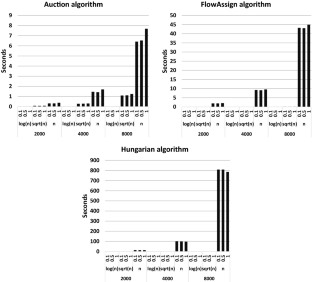
Similar content being viewed by others

The Frank-Wolfe Algorithm: A Short Introduction
Sebastian Pokutta
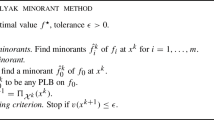
Polyak Minorant Method for Convex Optimization
Nikhil Devanathan & Stephen Boyd

A review and comparison of solvers for convex MINLP
Jan Kronqvist, David E. Bernal, … Ignacio E. Grossmann
Bertsekas, D.P.: The auction algorithm: a distributed relaxation method for the assignment problem. Annal Op. Res. 14 , 105–123 (1988)
Article MathSciNet Google Scholar
Bertsekas, D.P., Castañon, D.A.: Parallel synchronous and asynchronous implementations of the auction algorithm. Parallel Comput. 17 , 707–732 (1991)
Article Google Scholar
Bertsekas, D.P.: Linear network optimization: algorithms and codes. MIT Press, Cambridge, MA (1991)
MATH Google Scholar
Bertsekas, D.P.: The auction algorithm for shortest paths. SIAM J. Optim. 1 , 425–477 (1991)
Bertsekas, D.P.: Auction algorithms for network flow problems: a tutorial introduction. Comput. Optim. Appl. 1 , 7–66 (1992)
Bertsekas, D.P., Castañon, D.A., Tsaknakis, H.: Reverse auction and the solution of inequality constrained assignment problems. SIAM J. Optim. 3 , 268–299 (1993)
Bertsekas, D.P., Eckstein, J.: Dual coordinate step methods for linear network flow problems. Math. Progr., Ser. B 42 , 203–243 (1988)
Bertsimas, D., Tsitsiklis, J.N.: Introduction to linear optimization. Athena Scientific, Belmont, MA (1997)
Google Scholar
Burkard, R., Dell’Amico, M., Martello, S.: Assignment Problems. Revised reprint. SIAM, Philadelphia, PA (2011)
Gabow, H.N., Tarjan, R.E.: Faster scaling algorithms for network problems. SIAM J. Comput. 18 (5), 1013–1036 (1989)
Goldberg, A.V., Tarjan, R.E.: A new approach to the maximum flow problem. J. Assoc. Comput. Mach. 35 , 921–940 (1988)
Goldberg, A.V., Tarjan, R.E.: Finding minimum-cost circulations by successive approximation. Math. Op. Res. 15 , 430–466 (1990)
Goldberg, A.V., Kennedy, R.: An efficient cost scaling algorithm for the assignment problem. Math. Programm. 71 , 153–177 (1995)
MathSciNet MATH Google Scholar
Goldberg, A.V., Kennedy, R.: Global price updates help. SIAM J. Discr. Math. 10 (4), 551–572 (1997)
Kuhn, H.W.: The Hungarian method for the assignment problem. Naval Res. Logist. Quart. 2 , 83–97 (1955)
Kuhn, H.W.: Variants of the Hungarian method for the assignment problem. Naval Res. Logist. Quart. 2 , 253–258 (1956)
Lawler, E.L.: Combinatorial optimization: networks and matroids, Holt. Rinehart & Winston, New York (1976)
Orlin, J.B., Ahuja, R.K.: New scaling algorithms for the assignment ad minimum mean cycle problems. Math. Programm. 54 , 41–56 (1992)
Ramshaw, L., Tarjan, R.E., Weight-Scaling Algorithm, A., for Min-Cost Imperfect Matchings in Bipartite Graphs, : IEEE 53rd Annual Symposium on Foundations of Computer Science. New Brunswick, NJ 2012 , 581–590 (2012)
Zaki, H.: A comparison of two algorithms for the assignment problem. Comput. Optim. Appl. 4 , 23–45 (1995)
Download references
Acknowledgements
This research was partially supported by SNI and CONACyT.
Author information
Authors and affiliations.
Banco de México, Mexico City, Mexico
Carlos A. Alfaro & Marcos C. Vargas
Mountain View, CA, 94043, USA
Sergio L. Perez
Departamento de Matemáticas, CINVESTAV del IPN, Apartado postal 14-740, 07000, Mexico City, Mexico
Carlos E. Valencia
You can also search for this author in PubMed Google Scholar
Corresponding author
Correspondence to Carlos A. Alfaro .
Ethics declarations
Conflict of interest.
There is no conflict of interest.
Additional information
Publisher's note.
Springer Nature remains neutral with regard to jurisdictional claims in published maps and institutional affiliations.
The authors were partially supported by SNI and CONACyT.
Rights and permissions
Reprints and permissions
About this article
Alfaro, C.A., Perez, S.L., Valencia, C.E. et al. The assignment problem revisited. Optim Lett 16 , 1531–1548 (2022). https://doi.org/10.1007/s11590-021-01791-4
Download citation
Received : 26 March 2020
Accepted : 03 August 2021
Published : 16 August 2021
Issue Date : June 2022
DOI : https://doi.org/10.1007/s11590-021-01791-4

Share this article
Anyone you share the following link with will be able to read this content:
Sorry, a shareable link is not currently available for this article.
Provided by the Springer Nature SharedIt content-sharing initiative
- Assignment problem
- Bertsekas auction algorithm
- Combinatorial optimization and matching
- Find a journal
- Publish with us
- Track your research
Welcome to maxusknowledge.com

Contact Us:
Email: [email protected]
Assignment Model | Linear Programming Problem (LPP) | Introduction
What is assignment model.
→ Assignment model is a special application of Linear Programming Problem (LPP) , in which the main objective is to assign the work or task to a group of individuals such that;
i) There is only one assignment.
ii) All the assignments should be done in such a way that the overall cost is minimized (or profit is maximized, incase of maximization).
→ In assignment problem, the cost of performing each task by each individual is known. → It is desired to find out the best assignments, such that overall cost of assigning the work is minimized.
For example:
Suppose there are 'n' tasks, which are required to be performed using 'n' resources.
The cost of performing each task by each resource is also known (shown in cells of matrix)
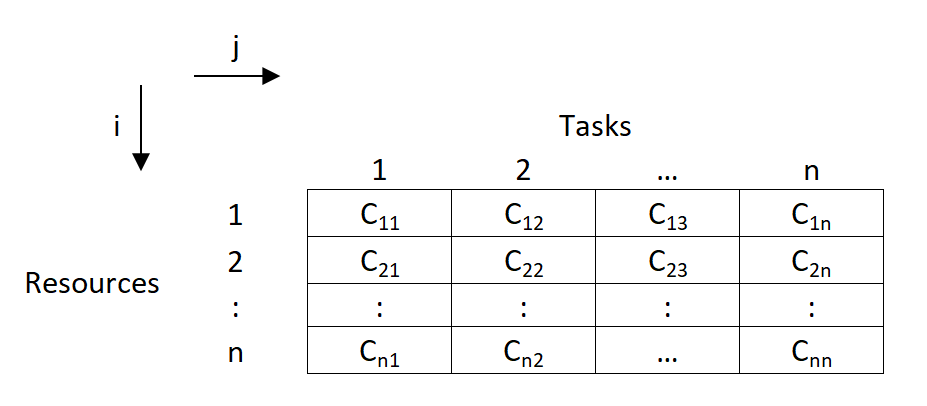
- In the above asignment problem, we have to provide assignments such that there is one to one assignments and the overall cost is minimized.
How Assignment Problem is related to LPP? OR Write mathematical formulation of Assignment Model.
→ Assignment Model is a special application of Linear Programming (LP).
→ The mathematical formulation for Assignment Model is given below:
→ Let, C i j \text {C}_{ij} C ij denotes the cost of resources 'i' to the task 'j' ; such that

→ Now assignment problems are of the Minimization type. So, our objective function is to minimize the overall cost.
→ Subjected to constraint;
(i) For all j t h j^{th} j t h task, only one i t h i^{th} i t h resource is possible:
(ii) For all i t h i^{th} i t h resource, there is only one j t h j^{th} j t h task possible;
(iii) x i j x_{ij} x ij is '0' or '1'.
Types of Assignment Problem:
(i) balanced assignment problem.
- It consist of a suqare matrix (n x n).
- Number of rows = Number of columns
(ii) Unbalanced Assignment Problem
- It consist of a Non-square matrix.
- Number of rows ≠ \not= = Number of columns
Methods to solve Assignment Model:
(i) integer programming method:.
In assignment problem, either allocation is done to the cell or not.
So this can be formulated using 0 or 1 integer.
While using this method, we will have n x n decision varables, and n+n equalities.
So even for 4 x 4 matrix problem, it will have 16 decision variables and 8 equalities.
So this method becomes very lengthy and difficult to solve.
(ii) Transportation Methods:
As assignment problem is a special case of transportation problem, it can also be solved using transportation methods.
In transportation methods ( NWCM , LCM & VAM), the total number of allocations will be (m+n-1) and the solution is known as non-degenerated. (For eg: for 3 x 3 matrix, there will be 3+3-1 = 5 allocations)
But, here in assignment problems, the matrix is a square matrix (m=n).
So total allocations should be (n+n-1), i.e. for 3 x 3 matrix, it should be (3+3-1) = 5
But, we know that in 3 x 3 assignment problem, maximum possible possible assignments are 3 only.
So, if are we will use transportation methods, then the solution will be degenerated as it does not satisfy the condition of (m+n-1) allocations.
So, the method becomes lengthy and time consuming.
(iii) Enumeration Method:
It is a simple trail and error type method.
Consider a 3 x 3 assignment problem. Here the assignments are done randomly and the total cost is found out.
For 3 x 3 matrix, the total possible trails are 3! So total 3! = 3 x 2 x 1 = 6 trails are possible.
The assignments which gives minimum cost is selected as optimal solution.
But, such trail and error becomes very difficult and lengthy.
If there are more number of rows and columns, ( For eg: For 6 x 6 matrix, there will be 6! trails. So 6! = 6 x 5 x 4 x 3 x 2 x 1 = 720 trails possible) then such methods can't be applied for solving assignments problems.
(iv) Hungarian Method:
It was developed by two mathematicians of Hungary. So, it is known as Hungarian Method.
It is also know as Reduced matrix method or Flood's technique.
There are two main conditions for applying Hungarian Method:
(1) Square Matrix (n x n). (2) Problem should be of minimization type.
Suggested Notes:
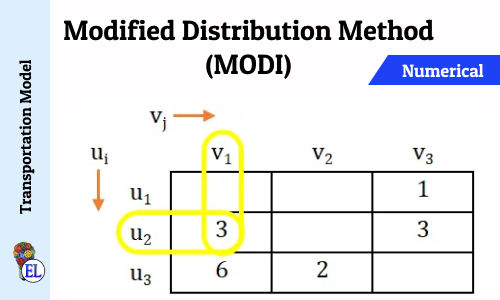
Modified Distribution Method (MODI) | Transportation Problem | Transportation Model

Stepping Stone | Transportation Problem | Transportation Model
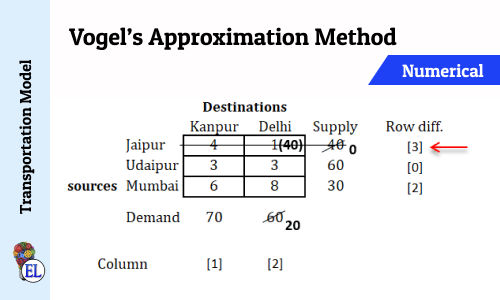
Vogel’s Approximation Method (VAM) | Method to Solve Transportation Problem | Transportation Model
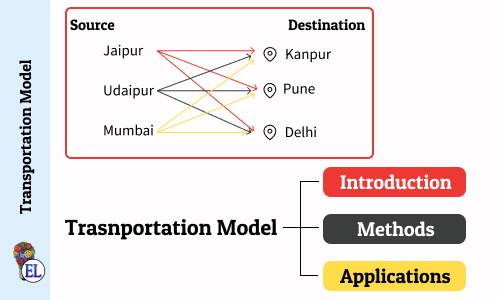
Transportation Model - Introduction
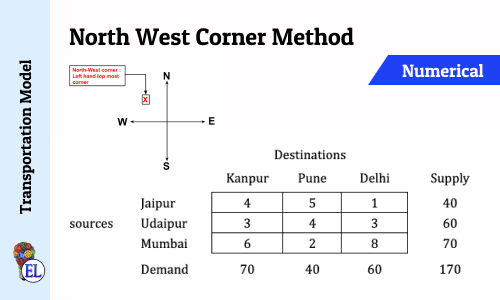
North West Corner Method | Method to Solve Transportation Problem | Transportation Model
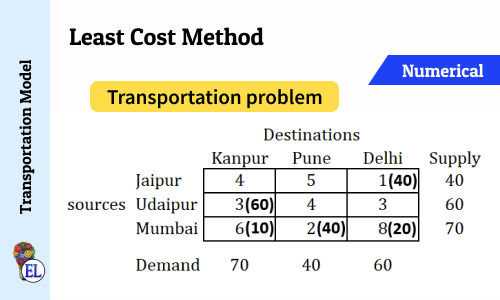
Least Cost Method | Method to Solve Transportation Problem | Transportation Model
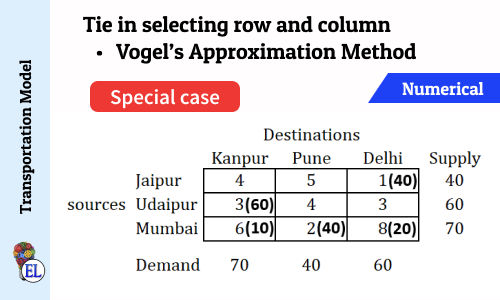
Tie in selecting row and column (Vogel's Approximation Method - VAM) | Numerical | Solving Transportation Problem | Transportation Model
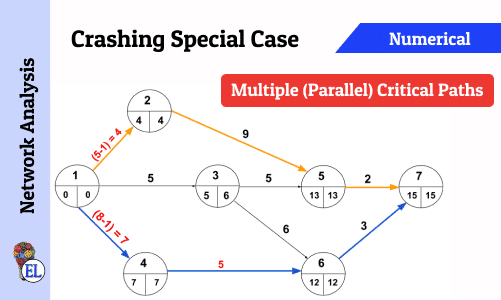
Crashing Special Case - Multiple (Parallel) Critical Paths
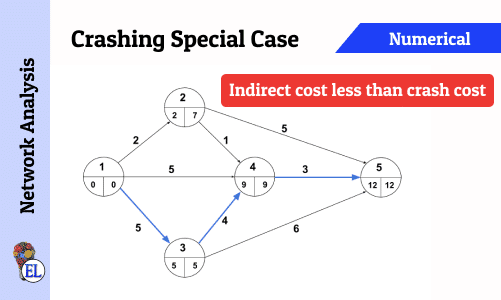
Crashing Special Case - Indirect cost less than Crash Cost
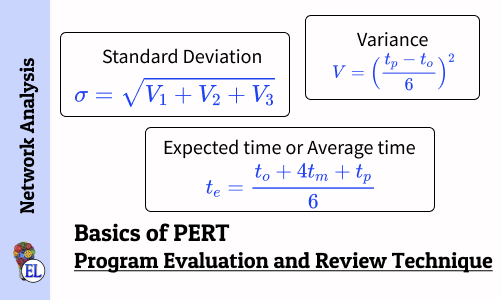
Basics of Program Evaluation and Review Technique (PERT)
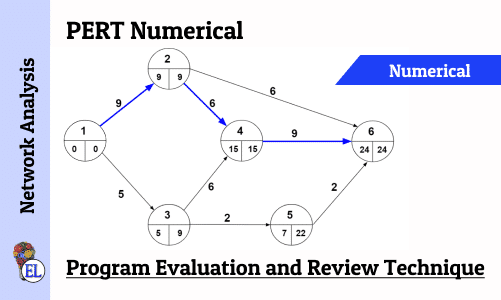
Numerical on PERT (Program Evaluation and Review Technique)
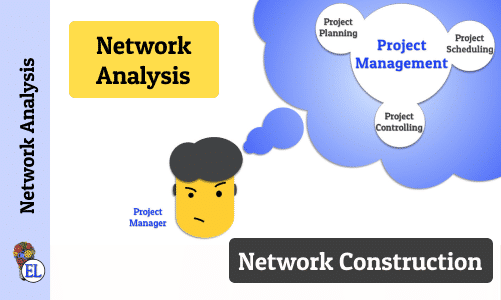
Network Analysis - Dealing with Network Construction Basics
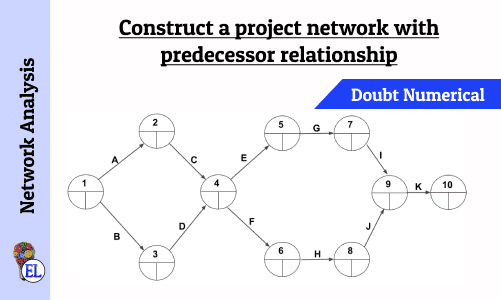
Construct a project network with predecessor relationship | Operation Research | Numerical

Graphical Method | Methods to solve LPP | Linear Programming
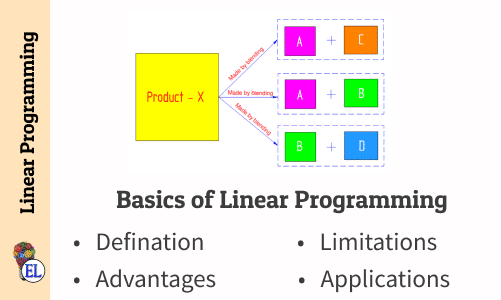
Basics of Linear Programming
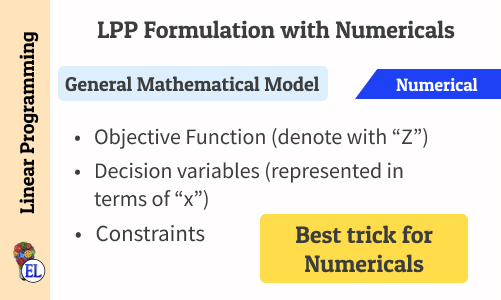
Linear Programming Problem (LPP) Formulation with Numericals

All comments that you add will await moderation. We'll publish all comments that are topic related, and adhere to our Code of Conduct .
Want to tell us something privately? Contact Us
Post comment

Education Lessons
Stay in touch, [notes] operation research, [notes] dynamics of machinery, [notes] maths, [notes] science, [notes] computer aided design.
MBA Knowledge Base
Business • Management • Technology
Home » Management Science » Transportation and Assignment Models in Operations Research
Transportation and Assignment Models in Operations Research
Transportation and assignment models are special purpose algorithms of the linear programming. The simplex method of Linear Programming Problems(LPP) proves to be inefficient is certain situations like determining optimum assignment of jobs to persons, supply of materials from several supply points to several destinations and the like. More effective solution models have been evolved and these are called assignment and transportation models.
The transportation model is concerned with selecting the routes between supply and demand points in order to minimize costs of transportation subject to constraints of supply at any supply point and demand at any demand point. Assume a company has 4 manufacturing plants with different capacity levels, and 5 regional distribution centres. 4 x 5 = 20 routes are possible. Given the transportation costs per load of each of 20 routes between the manufacturing (supply) plants and the regional distribution (demand) centres, and supply and demand constraints, how many loads can be transported through different routes so as to minimize transportation costs? The answer to this question is obtained easily through the transportation algorithm.
Similarly, how are we to assign different jobs to different persons/machines, given cost of job completion for each pair of job machine/person? The objective is minimizing total cost. This is best solved through assignment algorithm.
Uses of Transportation and Assignment Models in Decision Making
The broad purposes of Transportation and Assignment models in LPP are just mentioned above. Now we have just enumerated the different situations where we can make use of these models.
Transportation model is used in the following:
- To decide the transportation of new materials from various centres to different manufacturing plants. In the case of multi-plant company this is highly useful.
- To decide the transportation of finished goods from different manufacturing plants to the different distribution centres. For a multi-plant-multi-market company this is useful.
- To decide the transportation of finished goods from different manufacturing plants to the different distribution centres. For a multi-plant-multi-market company this is useful. These two are the uses of transportation model. The objective is minimizing transportation cost.
Assignment model is used in the following:
- To decide the assignment of jobs to persons/machines, the assignment model is used.
- To decide the route a traveling executive has to adopt (dealing with the order inn which he/she has to visit different places).
- To decide the order in which different activities performed on one and the same facility be taken up.
In the case of transportation model, the supply quantity may be less or more than the demand. Similarly the assignment model, the number of jobs may be equal to, less or more than the number of machines/persons available. In all these cases the simplex method of LPP can be adopted, but transportation and assignment models are more effective, less time consuming and easier than the LPP.
Related Posts:
- Economic interpretation of linear programming duality
- Waiting Lines and Queuing System in Management Science
- Model of Quantitative Analysis
- Introduction to Linear Programming (L.P)
- Procedure for finding an optimum solution for transportation problem
- Introduction to Transportation Problem
- Initial basic feasible solution of a transportation problem
- Introduction to Crtical Path Analysis
- Construction of Mathematical Decision Model
- Duality in linear programming
One thought on “ Transportation and Assignment Models in Operations Research ”
Exclussive dff. And easy understude
Leave a Reply Cancel reply
Your email address will not be published. Required fields are marked *
Thank you for visiting nature.com. You are using a browser version with limited support for CSS. To obtain the best experience, we recommend you use a more up to date browser (or turn off compatibility mode in Internet Explorer). In the meantime, to ensure continued support, we are displaying the site without styles and JavaScript.
- View all journals
- My Account Login
- Explore content
- About the journal
- Publish with us
- Sign up for alerts
- Open access
- Published: 25 March 2023
Machine endowment cost model: task assignment between humans and machines
- Qiguo Gong ORCID: orcid.org/0000-0002-7783-9467 1
Humanities and Social Sciences Communications volume 10 , Article number: 129 ( 2023 ) Cite this article
1068 Accesses
1 Citations
Metrics details
- Operational research
Although research on human–machine task assignment has presently received academic attention, the theoretical foundation of task assignment requires further development. Based on the two-dimensional characteristics of task flexibility and cognition, a machine endowment cost model is built to examine the economic allocation of tasks between humans and machines. The model derives a machine production possibility curve that directly divides all tasks into two categories, one each for machines and humans. The model shows the dynamic of task allocation between humans and machines as the economic environment evolves, such as wage growth and technological development, and provides conditions wherein task polarization may prevail. The model can be applied to human–machine task assignment decisions in industry and services.
Similar content being viewed by others
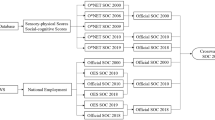
The future of the labor force: higher cognition and more skills
Wen Zhang, Kee-Hung Lai & Qiguo Gong

Robots, labor markets, and universal basic income
Antonio Cabrales, Penélope Hernández & Angel Sánchez
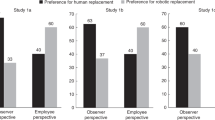
Psychological reactions to human versus robotic job replacement
Armin Granulo, Christoph Fuchs & Stefano Puntoni
Introduction
Automation promotes the replacement of people with machines in accomplishing tasks. Economists have found that replacing humans with machines leads to a phenomenon called “task polarization” (Acemoglu, 1999 ; Autor et al., 2003 ; Autor et al., 2006 ; Goos and Manning, 2007 ; Goos et al., 2009 ; Goos et al., 2014 ). If skills are classified by levels such as low, medium, or high, machines are likely to replace humans in performing middle-skill tasks, while humans will be primarily engaged in low- and high-skill tasks. The trend of machines replacing humans has accelerated as technology advances. Although task polarization has several definitions, the understanding of tasks performed by machines instead of humans requires improvement. Concerns regarding this include “establishing a theoretical basis for whether a task should be assigned to machines or humans” and “investigating why some tasks can be assigned to machines instead of humans, whereas others cannot.”
Some scholars have analyzed this issue conceptually. Autor et al. ( 2003 ) divided tasks into routine and nonroutine categories. Machines can perform routine tasks in place of humans. Routine tasks can be summarized as series of specific activities completed according to clearly defined instructions and procedures. Conversely, a nonroutine task requires flexibility, creativity, problem-solving, or interpersonal skills. Acemoglu and Autor ( 2011 ) and Autor ( 2015 ) further categorized tasks along two dimensions—cognitive and manual—in addition to routine and nonroutine. The difference between cognitive and manual tasks lies in the degree of mental and physical activity. Tasks that software engineers can code to be performed automatically by machines, such as accounting, are routine cognitive tasks. Accurately performing repetitive physical operations in a stable environment, such as assembly tasks, is a routine manual task. It is challenging to computerize nonroutine manual and cognitive tasks. Nonroutine manual workers, such as personal care workers in service occupations, generally appear at the lower end of the occupational skill spectrum. Meanwhile, nonroutine cognitive workers, such as economists, tend to appear at the higher end.
In recent years, the engineering community has shown increased interest in task assignment between humans and machines (Ranz et al., 2017 ; Malik and Bilberg, 2019 ; Yuan et al., 2020 ). Their purpose is to achieve better human–robot cooperation and COBOT (collaborative robot) development.
Two-dimensional capabilities are required for machines to perform tasks: manual flexibility and cognitive ability. These attributes are called the flexibility and cognitive endowments of the machine. In this study, we build a machine endowment model using these two-dimensional task characteristics to directly determine task assignments between humans and machines. Previous models have explained task polarization; however, they did not consider the two-dimensional characteristics of tasks (Acemoglu and Autor, 2011 ; Acemoglu and Restrepo, 2018b ; Acemoglu and Restrepo, 2018c ).
Task assignment between a machine and a human depends on the costs of the machine and the human. Cognitive skills are related to educational level, the main driver of wage growth (Yamaguchi, 2012 ; Michaels et al., 2014 ; Frey and Osborne, 2017 ; Alabdulkareem et al., 2018 ). Occupations with less educated humans often rely on manual skills and pay poorly (Frey and Osborne, 2017 ; Alabdulkareem et al., 2018 ). Thus, cognitive ability enhances human wages in our model, while manual flexibility is unrelated to human wages.
We synthesize the above views regarding skill classification. Skills are categorized as low, medium, and high based solely on cognitive ability, with manual flexibility not considered.
This paper makes a contribution to the literature by examining how tasks can be allocated economically between humans and machines according to the two-dimensionality required by flexibility and cognitive endowments. A second contribution is shedding light on the dynamic of task allocation as the economic environment evolves, such as with increases in wage level and technological advances. A third contribution is providing conditions wherein task polarization may prevail.
First, we compare the cost of a task completed by a machine with that completed by a human. Using our model, we obtain a machine production possibility curve (MPPC) to determine whether the task should be assigned to a machine or a human. Based on our cost model, we find that companies would replace expensive humans with cheaper machines (Acemoglu and Restrepo, 2018a ; Basso and Jimeno, 2021 ).
Second, regarding the dynamic of task allocation between humans and machines when the economic environment evolves; generally, machine technology is progressing toward middle-skill tasks (Autor et al., 2003 ; Cortes, 2016 ; Spitz-Oener, 2006 ; Ross, 2017 ; Wang, 2020 ; Atalay et al., 2020 ). In the future, with the advancement of technology, tasks will be increasingly assigned to machines. The expected technological advancement will cause the elimination of 83% of the jobs in low-wage industries (Acemoglu and Restrepo, 2018b ; Frey and Osborne, 2017 ; Acemoglu and Restrepo, 2020 ). However, the direction of the influence of machine technology may differ; for example, technological development could be directed toward increasing the flexibility of machines while reducing associated costs. Another example is technological development to improve cognitive ability, such as deep learning. The model explains that technological progress is often affected by human wages. A decrease in minimum wage hinders the employment of minimum wage workers in regular occupations (Aaronson and Phelan, 2019 ; Lordan and Neumark, 2018 ). Another example is the rate at which wages increase with cognitive ability. If the rate is high, so the wages of middle-skilled labor are high, technology will develop in the direction of replacing middle-skilled labor to save cost. That is, skill-biased technological development occurs. Skill-biased technological development was less evident in European countries with lower wage differentials (Acemoglu, 2003 ).
Third, the model provides conditions under which task polarization may prevail.
The remainder of the paper is organized as follows. The second section details our model. The third is a case verification in the engineering field. The final section provides a conclusion and discusses the implications.
Machine endowment cost model
Previously, machines only had one dimensional capability: manual flexibility or cognitive ability. An example is simple operations for production tasks requiring low flexibility and no cognitive skills. Another example is computer programming algorithms, which only require a certain degree of cognition. However, currently, machines require operational flexibility and cognition. For example, a garbage-sorting robot must first identify the type of garbage, requiring cognitive ability, and then sort the garbage into different trash bins, requiring operational flexibility. Today, machines are developing in the direction of humans. With the progress of technology, the scope of tasks that machines can complete is evolving. For example, developing soft robots may better accomplish manual tasks than traditional rigid robots. Meanwhile, machine learning in artificial intelligence may better accomplish cognitive tasks. It is possible to replace humans with machines for manual and cognitive tasks with the advances in machine technology and the increased capabilities of machines. Task classification should include tasks that combine manual and cognitive tasks, for example, aircraft piloting and maintenance.
In the model, g and f represent cognitive and flexibility endowments, respectively; the endowment of a machine is ( g , f ). The cost of the machine is as follows:
where α represents the technology level, a is the coefficient of cognitive cost, and b is the coefficient of flexibility cost ( α > 1, a > 1, b > 1).
When ρ = 1, Eq. ( 1 ) demonstrates constant elasticity of substitution, implying that doubling a machine’s flexibility and cognitive ability doubles cost. It is reasonable to assume that doubling a machine’s flexibility and cognitive ability will cost more than double the cost; thus, we keep ρ > 1. From Eq. ( 1 ), we obtain ∂ C ⁄∂ f > 0, ∂C⁄∂ g > 0, ∂ C ⁄∂ a > 0, ∂ C ⁄∂ b > 0, and ∂ C ⁄∂ α < 0 (see Proof 1 in the Appendix ).
∂ C ⁄∂ α < 0 implies that the cost of a machine with no change in endowment decreases as technology advances.
Wages are highly correlated with educational level (Frey and Osborne, 2017 ; Alabdulkareem et al., 2018 ). Humans are paid according to their cognitive ability; thus, wages do not depend on flexibility. The wage for a task requiring endowment ( g , f ) is as follows:
where c > 0, β > 0, and c represents the minimum wage. When g = 0, the minimum wage is c ρ . The minimum wage is unrelated to cognitive ability but rather to the value of flexibility. β is the coefficient of human cognition. The superscript ρ is the same as in Eq. ( 1 ) for convenient analysis, ρ > 1, meaning that wages increase faster than cognitive ability develops. Obviously, wages are also affected by the base minimum wage. As humans’ cognitive ability grows, so does their flexibility value. The same ρ is used for simplicity in Eqs. ( 1 ) and ( 2 ). If ρ is different, the cost of larger ρ will increase faster, which will inevitably be a disadvantage when assigning tasks. Therefore, it is reasonable to set the same ρ .
Machine production possibility curve
If the machine and human costs of accomplishing the tasks requiring endowment ( g , f ) are equal,
From (3b), the MPPC is derived as follows (let \(\left( {\widetilde g,\widetilde f} \right)\) be the point on the MPPC):
The MPPC divides the endowment ( g , f ) area in two parts (Fig. 1 ), where the horizontal and vertical axis is g and f , respectively. When \(\widetilde g = 0\) , \(\widetilde f = cb^{ - \frac{1}{\alpha }}\) , and when \(\widetilde f = 0\) , \(\widetilde g = c\left( {a^{\frac{1}{\alpha }} - \beta } \right)^{ - 1}\) , we find that if \(a^{\frac{1}{\alpha }} \le \beta\) , \(\widetilde g\) tends to infinity. Thus, machines will be able to replace all high-skill jobs. It is generally believed that humans have a cognitive advantage over machines; thus, \(a^{\frac{1}{\alpha }} \le \beta\) .
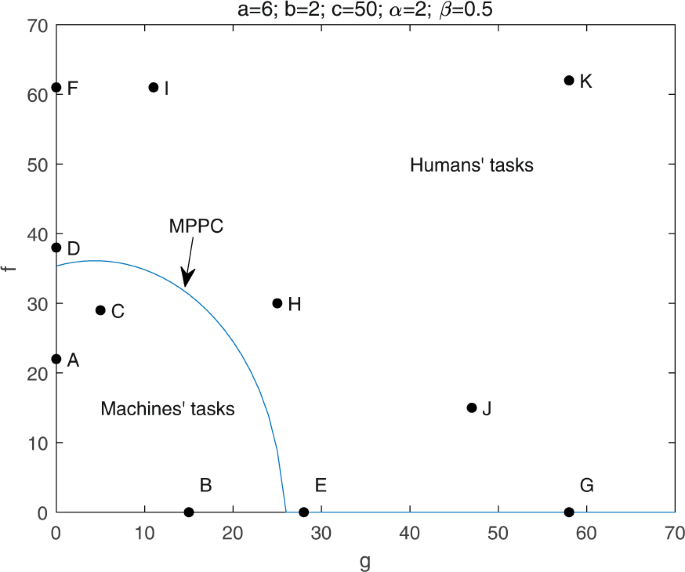
Machine production possibility curve (MPPC).
Proposition 1. Humans perform tasks in the endowment area above the MPPC. Machines perform tasks below the MPPC (see Proof 2 in the Appendix ) .
Therefore, the MPPC is a direct and simple method to divide tasks into two, one assigned to machines and the other assigned to humans. This differs from the literature, where the division needs to be clarified.
Task characteristics are measured by flexibility and cognition. In Fig. 1 , we assume that cognitive endowments of g ≤ 20, 20 < g ≤ 40, and g > 40 are low, medium, and high cognitive endowments, respectively. Flexibility endowments of f ≤ 30, 30 < f ≤ 60, and f > 60 are low, medium, and high flexibility endowments, respectively. Manual tasks (points A, D, and F) only require low, middle, and high flexibility endowments, respectively. Cognitive tasks (points B, E, and G) only require low, middle, and high cognitive endowments, respectively. Tasks can be of several types: low flexible manual and low cognitive (point C), middle flexible manual and middle cognitive (point H), high flexible manual and low cognitive (point I), low flexible manual and high cognitive (point J), and high flexible manual and high cognitive (point K).
The tasks below the curve include those requiring low-to-moderate cognition and flexibility. Meanwhile, the tasks above the curve require moderate-to-high cognitive ability and flexibility. Any tasks requiring high flexibility or high cognitive abilities are above the curve. Classifying skills as low, medium, and high is not related to flexibility but rather to cognition (Yamaguchi, 2012 ; Michaels et al., 2014 ; Frey and Osborne, 2017 ; Alabdulkareem et al., 2018 ). Thus, A, B, C, D, F, and I in Fig. 1 are low-skill tasks; E and H are medium-skill tasks; and G, J, and K are high-skill tasks.
Why do humans still perform some middle-skill tasks? These middle-skill tasks require midrange cognitive abilities and moderate-to-high flexibility. Middle-skill tasks include middle cognition and high manual tasks. It is difficult for machines to perform tasks that require high flexibility and medium cognition such as product repair tasks in a manufacturing plant. Machines have replaced nearly all humans on some production lines of smart factories. However, defective products require repairs by humans. As maintenance tasks cover nearly all aspects of a product, they require employees to master a large amount of product knowledge, requiring medium or high cognition. Further, maintenance workers must perform various maintenance tasks requiring a high degree of flexibility. Therefore, humans with high flexibility and middle cognitive ability are required for these medium-skill tasks.
Previously, we primarily trained low-skilled manual workers (under college level) and workers with high cognitive abilities (undergraduate and above). Currently, we require a workforce with a high degree of flexibility and cognitive ability. College education must combine manual labor skills with high cognitive skills, as in the German educational system (Wang, 2020 ). In Germany, middle-skilled laborers have not been replaced in large numbers as in the UK; most turn to high-skill jobs if machines replace them. This occurs because German workers receive training in new technology and can hence better adapt to the conditions of the new computer age. The flexibility of humans far exceeds that of machines; thus, assigning humans to production lines can better satisfy personalized needs.
Lower-skill tasks are assigned to machines because such tasks require a low flexibility endowment; therefore, machines are able to perform these tasks. Therefore, not all low-skill tasks are assigned to humans. Machines replace humans in performing middle- and low-skill tasks. In factories, many machines are engaged in mostly simple repetitive tasks. These tasks require low flexibility and very little or no cognitive skills. Machines have reduced the employment share of low-skilled workers (Graetz and Michaels, 2018 ). The increase in machine adoption is significantly related to the decline in employment share of routine jobs (De Vries et al., 2020 ).
The dynamic of task allocation
We consider the change in task allocation as the economic environment evolves, such as from technological development and wage growth.
Proposition 2. It can be seen that \({\tilde{f}}\) increases with α, c, and β, and decreases with a and b. The maximum \({\overline {g}}\) of \({\tilde {g}}\) of the MPPC increases with α, c, and β, and decreases with a (see Proof 3 in the Appendix ).
From Proposition 2, an increase in \({\tilde {f}}\) and \({\overline {g}}\) with α shows that machines perform more tasks as technology advances. When the technological level increases from α = 2 to α = 3, MPPC moves up (Fig. 2 ).
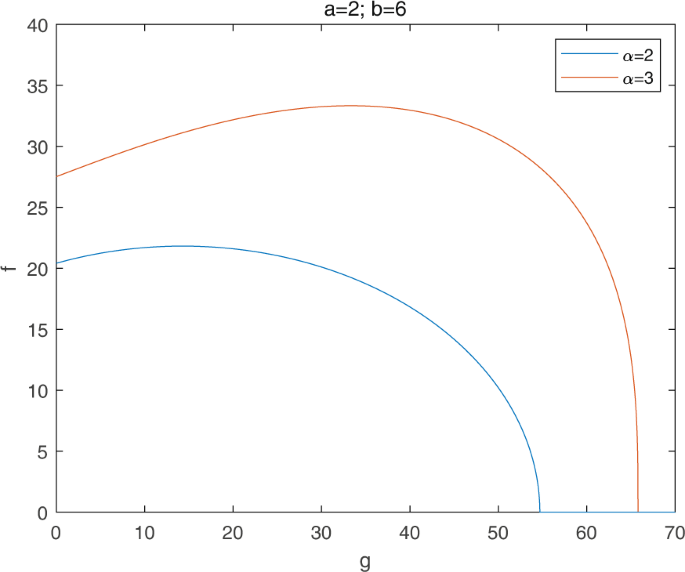
Tasks where humans replace machines with increasing technological advancement.
Therefore, more middle-skill tasks are relocated to machines, that is, technology advances in the direction of middle-skill-biased technological change (Autor et al., 2003 ; Cortes, 2016 ; Spitz-Oener, 2006 ; Ross, 2017 ; Wang, 2020 ; Atalay et al., 2020 ). As the MPPC moves up, some high-skill tasks become middle-skill tasks with the shifts in the curve.
If technology develops in the direction of flexibility ( b decreases) or cognition ( a decreases), what will happen to human–machine task allocation?
From Proposition 2, \(\widetilde f\) decreases in a and b and \(\overline g\) decreases in a . When technology boosts the flexibility endowment of machines through increased investment and cost reductions, that is, b decreases, machines can easily replace humans in completing tasks requiring greater flexibility. Traditional rigid robots have natural limitations in performing some operations, such as complex operations and grasping actions, due to their low degree of freedom. Unlike rigid robots with limited degrees of movement, soft robots have higher flexibility and possess a high degree of freedom (Rus and Tolley, 2015 ; Lee et al., 2017 ; Wang et al., 2018 ).
If technological development facilitates cognitive endowment, that is, a decreases, what impact will it have? In this case, machines can easily replace humans in completing tasks that require not only greater cognition but also greater flexibility. This is different between a and b because \(\widetilde f\) is related to a and b , while \(\overline g\) is only related to a ; \(\overline g\) is the value when \(\widetilde f = 0\) .
Currently, the most important general technology is artificial intelligence, especially machine learning, that is, the ability of a machine to continuously improve its model without requiring humans to explain how to perform the tasks (Brynjolfsson and Mitchell, 2017 ). Therefore, machines can replace humans in performing high-skill tasks. The flourishing of artificial intelligence will eventually lead to the replacement of humans with machines in high-intelligence tasks. Artificial intelligence will take over analytical tasks, and developing analytical skills will become less important (Huang and Rust, 2018 ). A system using IBM technology automates the claims process of an insurance company in Singapore (Brynjolfsson and Mcaffe, 2017 ). Artificial intelligence can be applied in various professional fields, including medicine, finance, and information technology. Therefore, artificial intelligence may reduce the number of job opportunities (Frank et al., 2019 ).
What happens to human–machine task assignments if human wages increase?
From Proposition 2, \(\widetilde f\) and \(\overline g\) increases in c and β . We already know that c represents the base wages for tasks that rely solely on flexibility and can be regarded as the minimum wage base. Therefore, an increase in the minimum wage base makes \(\widetilde f\) and \(\overline g\) increase, and the maximum flexibility and cognitive endowment of machines that can replace humans increases. Increasing the minimum wage base will lead to machines replacing people in more jobs. Aaronson and Phelan ( 2019 ) and Lordan and Neumark ( 2018 ) showed that increasing minimum wage reduces the employment of minimum wage workers.
Another situation is the rate at which wages increase with cognitive ability. When increases in the wage rate are for cognitive ability, machines’ maximum cognitive endowment increases. Machines will replace more middle-skilled workers. Acemoglu ( 2003 ) found that European countries with lower wage differentials show less evidence of skill-biased technological change.
Aggregate endowment analysis
For tasks requiring that the aggregate endowment equal θ , that is, g + f = θ , the cost function of Eq. ( 1 ) is as follows:
and Eq. ( 3b ) becomes
Upper bound
Is there an upper bound on aggregate endowments? When the required aggregate endowment exceeds the upper bound, the tasks can only be assigned to humans. In this way, task allocation can be directly judged through the required aggregate endowment.
Let θ U be the upper bound. If θ > θ U , C ( g , θ - g ) > W ( g , θ - g ) (Fig. 3 ). In Fig. 3 , the sum of the cognitive and flexibility endowments at any point on the straight line representing the upper bound of the aggregate endowment is θ U . Therefore, the straight line is an aggregate endowment isoline.
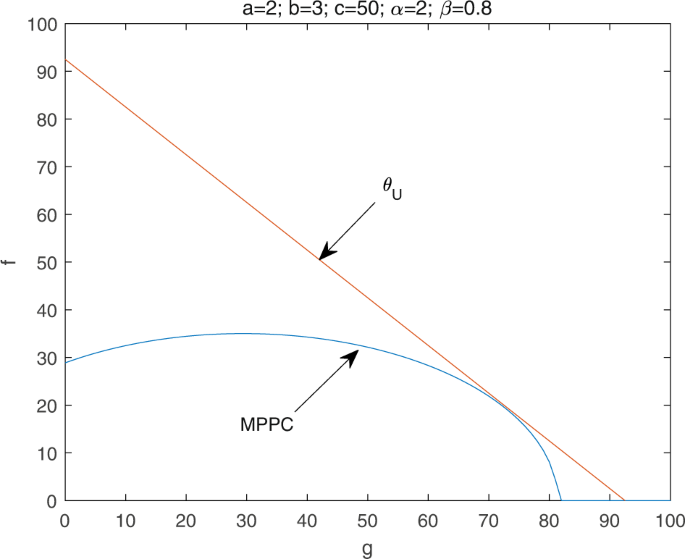
Upper bound of aggregate endowments.
Proposition 3. If the aggregate endowment required by a task is higher than the upper bound of the aggregate endowment (θ > θ U ), the cost to accomplish the task by a human is less than the cost of using a machine .
Proposition 3 means that if the flexibility endowment required by the task is high enough, a machine cannot replace a human to accomplish the task.
We can obtain the change in the upper bound of the aggregate endowment on the parameters (see Proof 4 in the Appendix ).
Proposition 4. The upper bound of the aggregate endowment θ U increases in α, c, and β, and decreases in a and b .
Proposition 4 indicates that when technological advancement ( α ), the minimum wage basis ( c ), and the rate of wage increases for cognition ( β ) increase, some tasks assigned to humans should be reallocated to machines. Conversely, when the coefficients of cognitive cost ( a ) and flexibility cost ( b ) increase, some tasks assigned to machines should be reallocated to humans.
Lower bound
Is there a lower bound on aggregate endowments? When the aggregate endowment is less than the lower bound, tasks can only be assigned to machines.
Let θ 1 be the intersection of the MPPC on the vertical axis. In Eq. ( 6 ), when \(g = 0,\,\theta _1 = b^{ - \frac{1}{\alpha }}c\) . Let θ 2 be the intersection of the MPPC on the horizontal axis. In Eq. ( 6 ), when f = 0, \(\theta _2 = c/\left( {a^{\frac{1}{\alpha }} - \beta } \right)\) . The smaller value of the two intersection points is the aggregate endowment’s lower bound ( θ L ).
Figure 4 shows \(a^{\frac{1}{\alpha }} - b^{\frac{1}{\alpha }}\, < \beta ,\,\theta _L = b^{ - \frac{1}{\alpha }}c\) , and Fig. 5 shows \(a^{\frac{1}{\alpha }} - b^{\frac{1}{\alpha }}\, > \, \beta ,\,\theta _L = c/\left( {a^{\frac{1}{\alpha }} - \beta } \right)\) . Similarly, the straight lines representing the lower bounds in Figs. 4 and 5 are the aggregate endowment isolines.
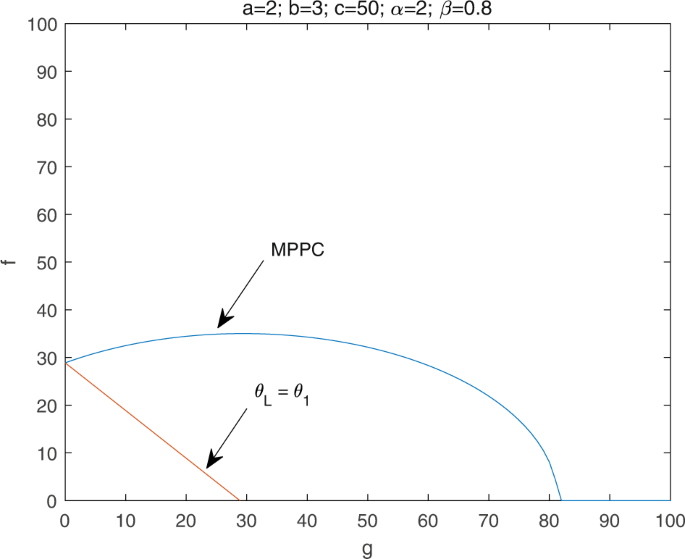
Lower bound when θ L = θ 1 .
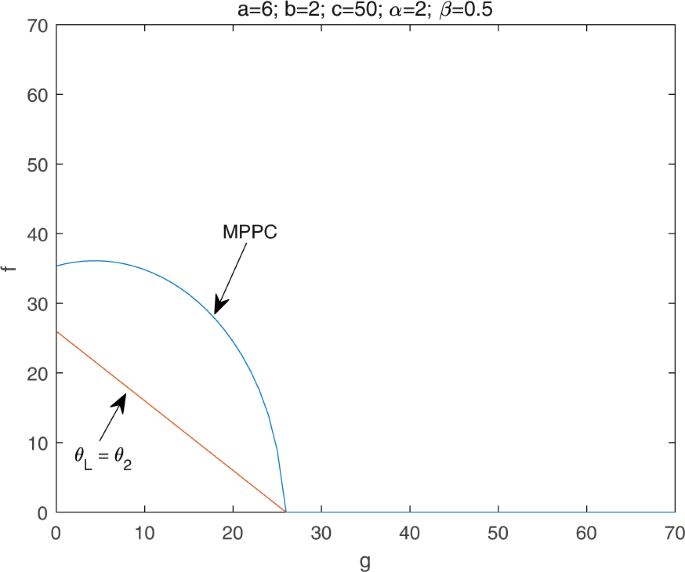
Lower bound when θ L = θ 2 .
Proposition 5. If θ ≤ θ L , the aggregate endowment required by a task is less than the lower bound; thus, the cost of using machines to accomplish this task is less than that of using humans .
If the aggregate machine endowment required to accomplish a task is low, a low-skilled worker accomplishing this task would be replaced with a machine.
We obtain the change in the lower bound of the aggregate endowment on parameters in Proof 5 in the Appendix .
Proposition 6. θ L increases in α, c, and β, and decreases in a and b .
We can see that the lower bound in Proposition 6 follows the same trend as the upper bound in Proposition 4 with each parameter.
Task polarization
Tasks requiring an aggregate endowment larger than the upper bound or smaller than the lower bound can be directly assigned to humans and machines, respectively. Between the upper and lower bounds of the aggregate endowment, the endowment on an aggregate endowment isoline corresponding to each aggregate endowment θ is ( g , θ - g ), 0 ≤ g ≤ θ. Some tasks on the aggregate endowment isoline are assigned to humans while others are assigned to machines. Task polarization occurs when tasks at the ends of the aggregate endowment isoline are assigned to humans and tasks in the middle are assigned to machines (Acemoglu, 1999 ; Autor et al., 2003 ; Autor et al., 2006 ; Goos and Manning, 200 ; Goos et al., 2009 ; Goos et al., 2014 ).
There are three situations. The first two situations are in ( θ 1 , θ 2 ).
θ 1 < θ < θ 2
For each θ , the aggregate endowment isoline ( g , θ - g ) has one intersection ( g 1 , θ - g 1 ) with the MPPC (Fig. 6 ). The intersection ( g 1 , θ - g 1 ) makes the task assignment on the aggregate endowment isoline ( g , θ - g ). Low-skilled humans perform tasks requiring endowments ( g , θ - g ), g < g 1 , and machines perform tasks requiring endowments ( g , θ - g ), g > g 1 . In this case, task polarization does not occur.

The intersection ( g 1 , θ - g 1 ) when θ 1 < θ 2 .
θ 2 < θ < θ 1
For each θ , the aggregate endowment isoline ( g , θ - g ) has one intersection ( g 2 , θ - g 2 ) with the MPPC (Fig. 7 ). The intersection ( g 2 , θ - g 2 ) makes the task assignment on the aggregate endowment isoline ( g , θ - g ). Machines perform tasks requiring endowments ( g , θ - g ), g < g 2 , and high-skilled humans perform tasks requiring endowments ( g , θ - g ), g > g 2 . Therefore, task polarization does not occur.
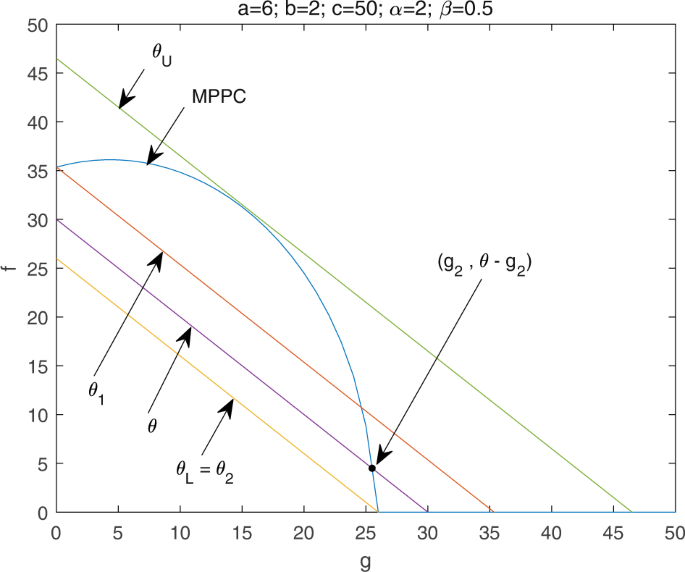
The intersection ( g 2 , θ - g 2 ) when θ 1 > θ 2 .
max ( θ 1 , θ 2 ) < θ < θU
In this case, there are two situations. One is θ 1 < θ 2 , and the other is θ 1 > θ 2 . Here, we consider the case of θ 1 < θ 2 and a similar situation.
For each θ , the aggregate endowment isoline ( g , θ - g ) has two intersections ( g 3 , θ - g 3 ) and ( g 4 , θ - g 4 ) with the MPPC (Fig. 8 ). The two intersections ( g 3 , θ - g 3 ) and ( g 4 , θ - g 4 ) make the task assignment on the aggregate endowment isoline ( g , θ - g ). Low-skilled humans do tasks requiring endowments ( g , θ - g ), g < g 3 ; machines do tasks requiring endowments ( g , θ - g ), g 3 < g < g 4 ; and high-skilled humans do tasks requiring endowments ( g , θ - g ), g > g 4 . In this situation, humans are responsible for tasks at both ends of the aggregate endowment isoline and machines perform tasks in the middle of the aggregate endowment isoline; thus, task polarization occurs.
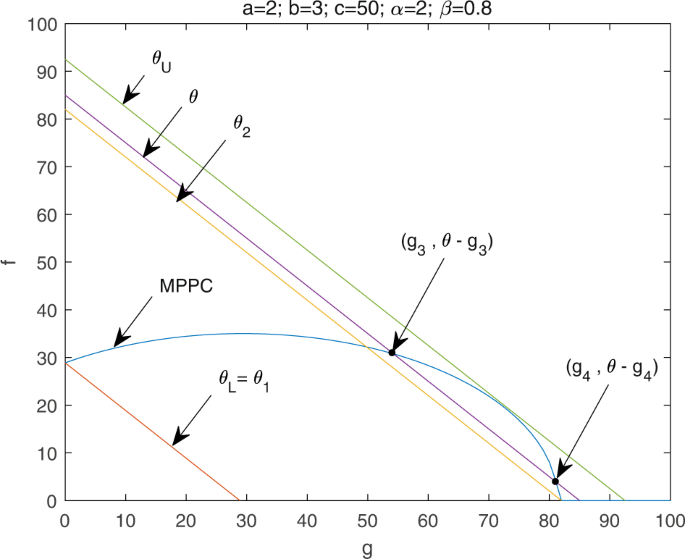
The intersections ( g 3 , θ - g 3 ) and ( g 4 , θ - g 4 ) when max( θ 1 , θ 2 )< θ < θ U .
Proposition 7. If max(θ 1 , θ 2 ) < θ < θ U , task polarization occurs .
Therefore, task polarization only occurs between the upper and lower bounds of the aggregate endowment in the middle endowment area.
Task polarization occurs in the middle endowment area because machines with high flexibility or cognitive endowments have higher costs compared to machines with moderate flexibility and cognitive endowments. Most tasks where humans are replaced by machines are middle-skill tasks requiring medium flexibility and cognitive ability. The machine’s aggregate endowment is given; the low cognitive endowment and the high flexibility endowment, or the high cognitive endowment and the low flexibility endowment, are combined in the high cost of the machine, indicating that low-skilled individuals can accomplish high flexibility tasks and high-skilled individuals can perform high cognitive tasks.
We can obtain the changing trend of the g 1 , g 2 , g 3 , and g 4 parameters if θ is kept constant when the parameters change (see Proof 6 in the Appendix ).
Proposition 8. If θ is kept constant, g 1 and g 3 decrease in α, c, and β, and increase in a and b. Conversely, g 2 and g 4 increase in α, c, and β, and decrease in a and b .
From Proposition 8, we can see the dynamic of the g 1 , g 2 , g 3 , and g 4 parameters α , β , a , b , c . When the parameters change, tasks should be reallocated according to Proposition 8. Especially, when advances in technology ( α ), the minimum wage ( c ), and wage rate for promoting cognition ( β ) increase, g 3 moves to the left and g 4 to the right on the aggregate endowment isoline on which task polarization occurs. That is, some tasks assigned to humans should be reallocated to machines. In contrast, when the coefficients of cognitive cost ( a ) and flexibility cost ( b ) increase, g 3 moves to the right and g 4 to the left. In this case, some tasks assigned to machines should be reallocated to humans. Therefore, we obtain the dynamic of task allocation under polarization.
Application in engineering
We discuss the application of our model with a numerical example combined with examples from the literature on human–machine task assignments. Consider that the parameters are set to a = 2, b = 3, c = 50, α = 2, and β = 0.8.
Malik and Bilberg ( 2019 ) score the complexity of assembly tasks, assigning tasks with low scores to machines and those with high scores to humans. We can regard the complexity of the assembly tasks as the flexibility needed by the machines. Therefore, tasks requiring high flexibility are assigned to humans, while those requiring low flexibility are assigned to machines.
We calculate the lower bound as 28. That is, tasks requiring aggregate endowments of less than 28 ( θ = f + g ≤ 28) are assigned to machines. Malik and Bilberg ( 2019 ) only consider the flexibility endowment of the machine required by the task, that is, g = 0; therefore, tasks requiring flexibility endowments less than or equal to 28 ( f ≤ 28) are assigned to machines. Tasks requiring aggregate endowments greater than 28 ( f > 28) are assigned to humans. Therefore, the case of Malik and Bilberg ( 2019 ) is consistent with our model.
Yuan et al. ( 2020 ) divided the complexity of tasks into assembly and cognitive complexity and scored them separately. Tasks with low assembly and cognitive complexity scores are assigned to machines, while tasks with high scores are assigned to humans. We can regard the assembly and cognitive complexity of the tasks as the flexibility and the cognitive endowments needed by machines, respectively. Therefore, tasks requiring high flexibility and cognitive endowments are assigned to humans, while tasks requiring low flexibility and cognitive endowments are assigned to machines.
Unlike Malik and Bilberg ( 2019 ), Yuan et al. ( 2020 ) considered the flexibility and cognitive endowments required to accomplish the tasks. We calculate the upper bound as 92 using the above parameters. That is, if the tasks requiring the aggregate endowments are more than 92 ( θ = f + g ≥ 92), they are assigned to humans. Meanwhile, tasks requiring an aggregate endowment less than or equal to 28 ( f ≤ 28) are assigned to machines. If the tasks requiring the aggregate machine endowments are between 28 and 92, how are the tasks assigned? Yuan et al. ( 2020 ) empirically divided the task into two parts. The low-scoring part of the tasks requiring low flexibility and cognitive endowments is assigned to machines, while the high-scoring part requiring high flexibility and cognitive endowments is assigned to humans. This is basically consistent with our model, but there is an important difference—Yuan et al. ( 2020 ) do not consider task polarization when the aggregate endowments are between the lower and upper bounds. For example, the tasks are assigned to low-skilled humans if the endowments required are θ = f + g = 87 and g ≤ 57, thus f ≥ 87–57 = 30. The tasks are assigned to machines if the endowments they require are θ = f + g = 87 and 57 < g < 81, thus 87−81 = 6 ≤ f ≤ 87−57 = 30. The tasks are assigned to high-skilled humans if the endowments they require are θ = f + g = 87 and g ≥ 80; thus, f ≤ 87−81 = 6.
The literature shows that task polarization occurs as machines replace humans to accomplish middle-skill tasks, making humans engage in only low- and high-skill tasks. From the perspective of machines, we define the endowment of machines based on the two-dimensional characteristics of tasks—flexibility and cognitive ability. A machine can obtain any endowment with related costs; thus, establishing the cost model of the machine endowment is essential to determine the cost of a machine required to complete a task.
We derive the MPPC that divides the tasks into two categories. Machines accomplish tasks below the curve, whereas humans perform tasks above the curve. Therefore, the MPPC provides a theoretical basis for human–machine task allocation.
Our model indicates the dynamic of future changes in human–machine task distribution. As technology advances, the curve moves upward. Machines can accomplish more tasks in existing tasks, while humans perform fewer tasks. Not all middle-skill tasks should be assigned to machines. If cognitive technologies develop faster, machines will replace mid- to high-skill jobs. Machine learning is an example of this phenomenon. Meanwhile, if flexibility technologies develop faster, machines such as soft robots will replace low-skill jobs. In the era of information technology, technology for cognitive ability develops faster than technologies for flexibility; thus, machines will replace mid- and high-skill jobs in the future. Additionally, changes in the minimum wage and the rate at which wages increase will cause changes in the allocation of tasks to humans and machines.
This study finds that using the aggregate endowment (the sum of flexibility and cognitive endowments) analysis method—that is, when the sum of flexibility and cognitive endowments is fixed—the model can give the conditions under which task polarization happens. Task polarization is an essential finding in economics. There is a lower and an upper bound of aggregate endowment. If a task requiring the aggregate endowment is less than the lower bound, the task is assigned to a machine. If a task requiring the aggregate endowment is higher than the upper bound, the task is assigned to a human.
The proposed model makes it possible to analyze the task assignment between humans and machines in detail, providing a theoretical foundation for corporate decision-making. The findings suggest that the education system should produce a middle-skilled workforce that is also capable of manual labor, as in the case of the German educational system.
Data availability
Data sharing is not applicable to this article as no datasets were generated or analyzed during the current study.
Aaronson D, Phelan BJ (2019) Wage shocks and the technological substitution of low‐wage jobs. Econ J 129(617):1–34
Article Google Scholar
Acemoglu D (1999) Changes in unemployment and wage inequality: an alternative theory and some evidence. Am Econ Rev 89(5):1259–1278
Acemoglu D (2003) Cross‐country inequality trends. Econ J 113(485):F121–F149
Acemoglu D, Autor D (2011) Skills, tasks and technologies: Implications for employment and earnings. In: Handbook of Labor Economics, vol. 4, Part B. Elsevier, North Holland. pp. 1043–1171
Acemoglu D, Restrepo P (2018a) Low-skill and high-skill automation. J Hum Cap 12(2):204–232
Acemoglu D, Restrepo P (2018b) The race between man and machine: Implications of technology for growth, factor shares, and employment. Am Econ Rev 108(6):1488–1542
Acemoglu D, Restrepo P (2018c) Modeling automation. AEA Papers Proc 108:48–53
Acemoglu D, Restrepo P (2020) Robots and jobs: evidence from US labor markets. J Polit Econ 128(6):2188–2244
Alabdulkareem A, Frank MR, Sun L, AlShebli B, Hidalgo C, Rahwan I (2018) Unpacking the polarization of workplace skills. Sci Adv 4(7):eaao6030
Article ADS PubMed PubMed Central Google Scholar
Atalay E, Phongthiengtham P, Sotelo S, Tannenbaum D (2020) The evolution of work in the United States. Am Econ J Appl Econ 12(2):1–34
Autor DH (2015) Why are there still so many jobs? The history and future of workplace automation. J Econ Perspect 29(3):3–30
Autor DH, Levy F, Murnane RJ (2003) The skill content of recent technological change: an empirical exploration. Q J Econ 118(4):1279–1333
Article MATH Google Scholar
Autor D, Katz LF, Kearney MS (2006) The polarization of the US labor market. Am Econ Rev 96(2):189–194
Basso HS, Jimeno JF (2021) From secular stagnation to robocalypse? Implications of demographic and technological changes. J Monet Econ 117:833–847
Brynjolfsson E, Mcaffe A (2017) The business of artificial intelligence. Harvard Bus Rev 7:3–11
Google Scholar
Brynjolfsson E, Mitchell T (2017) What can machine learning do? Workforce implications. Science 358(6370):1530–1534
Article ADS CAS PubMed Google Scholar
Cortes GM (2016) Where have the middle-wage workers gone? A study of polarization using panel data. J Labor Econ 34(1):63–105
De Vries GJ, Gentile E, Miroudot S, Wacker KM (2020) The rise of robots and the fall of routine jobs. Labour Econ 66:101885
Frank MR, Autor D, Bessen JE, Brynjolfsson E, Cebrian M, Deming DJ, Rahwan I (2019) Toward understanding the impact of artificial intelligence on labor. Proc Natl Acad Sci USA 116(14):6531–6539
Article ADS CAS PubMed PubMed Central Google Scholar
Frey CB, Osborne MA (2017) The future of employment: how susceptible are jobs to computerisation? Technol Forecast Soc Chang 114:254–280
Goos M, Manning A (2007) Lousy and lovely jobs: the rising polarization of work in Britain. Rev Econ Stat 89(1):118–133
Goos M, Manning A, Salomons A (2009) Job polarization in Europe. Am Econ Rev 99(2):58–63
Goos M, Manning A, Salomons A (2014) Explaining job polarization: routine-biased technological change and offshoring. Am Econ Rev 104(8):2509–2526
Graetz G, Michaels G (2018) Robots at work. Rev Econ Stat 100(5):753–768
Huang MH, Rust RT (2018) Artificial intelligence in service. J Serv Res 21(2):155–172
Lee C, Kim M, Kim YJ, Hong N, Ryu S, Kim, HJ, Kim S (2017) Soft robot review. Int J Control Autom Syst 15(1), 3–15
Lordan G, Neumark D (2018) People versus machines: the impact of minimum wages on automatable jobs. Labour Econ 52:40–53
Malik AA, Bilberg A (2019) Complexity-based task allocation in human-robot collaborative assembly. Ind Rob 46(4):471–480
Michaels G, Natraj A, Van Reenen J (2014) Has ICT polarized skill demand? Evidence from eleven countries over twenty-five years. Rev Econ Stat 96(1):60–77
Ranz F, Hummel V, Sihn W (2017) Capability-based task allocation in human-robot collaboration. Procedia Manuf 9:182–189
Ross MB (2017) Routine-biased technical change: panel evidence of task orientation and wage effects. Labour Econ 48:198–214
Rus D, Tolley MT (2015) Design, fabrication and control of soft robots. Nature 521(7553):467–475
Spitz-Oener A (2006) Technical change, job tasks, and rising educational demands: looking outside the wage structure. J Labor Econ 24(2):235–270
Wang H, Totaro M, Beccai L (2018) Toward perceptive soft robots: progress and challenges. Adv Sci 5(9):1800541
Wang X (2020) Labor market polarization in Britain and Germany: a cross-national comparison using longitudinal household data. Labour Econ 65:101862
Yamaguchi S (2012) Tasks and heterogeneous human capital. J Labor Econ 30(1):1–53
Article CAS Google Scholar
Yuan S, Gao Z, Dong M, Liu L, Xu T, Guo K, Wu F (2020) Evaluation of human-robot collaborative assembly task allocation plan. In: International Workshop of Advanced Manufacturing and Automation. Springer, Singapore. pp. 487–495
Download references
Author information
Authors and affiliations.
School of Economics and Management, University of Chinese Academy of Sciences, Beijing, China
You can also search for this author in PubMed Google Scholar
Corresponding author
Correspondence to Qiguo Gong .
Ethics declarations
Competing interests.
The author declares no competing interests.
Ethical approval
This article does not contain any studies with human participants performed by any of the authors.
Informed consent
Additional information.
Publisher’s note Springer Nature remains neutral with regard to jurisdictional claims in published maps and institutional affiliations.
Supplementary information
Rights and permissions.
Open Access This article is licensed under a Creative Commons Attribution 4.0 International License, which permits use, sharing, adaptation, distribution and reproduction in any medium or format, as long as you give appropriate credit to the original author(s) and the source, provide a link to the Creative Commons license, and indicate if changes were made. The images or other third party material in this article are included in the article’s Creative Commons license, unless indicated otherwise in a credit line to the material. If material is not included in the article’s Creative Commons license and your intended use is not permitted by statutory regulation or exceeds the permitted use, you will need to obtain permission directly from the copyright holder. To view a copy of this license, visit http://creativecommons.org/licenses/by/4.0/ .
Reprints and permissions
About this article
Cite this article.
Gong, Q. Machine endowment cost model: task assignment between humans and machines. Humanit Soc Sci Commun 10 , 129 (2023). https://doi.org/10.1057/s41599-023-01622-0
Download citation
Received : 08 September 2022
Accepted : 14 March 2023
Published : 25 March 2023
DOI : https://doi.org/10.1057/s41599-023-01622-0
Share this article
Anyone you share the following link with will be able to read this content:
Sorry, a shareable link is not currently available for this article.
Provided by the Springer Nature SharedIt content-sharing initiative
Quick links
- Explore articles by subject
- Guide to authors
- Editorial policies
- MapReduce Algorithm
Linear Programming using Pyomo
- Networking and Professional Development for Machine Learning Careers in the USA
- Predicting Employee Churn in Python
- Airflow Operators

Solving Assignment Problem using Linear Programming in Python
Learn how to use Python PuLP to solve Assignment problems using Linear Programming.
In earlier articles, we have seen various applications of Linear programming such as transportation, transshipment problem, Cargo Loading problem, and shift-scheduling problem. Now In this tutorial, we will focus on another model that comes under the class of linear programming model known as the Assignment problem. Its objective function is similar to transportation problems. Here we minimize the objective function time or cost of manufacturing the products by allocating one job to one machine.
If we want to solve the maximization problem assignment problem then we subtract all the elements of the matrix from the highest element in the matrix or multiply the entire matrix by –1 and continue with the procedure. For solving the assignment problem, we use the Assignment technique or Hungarian method, or Flood’s technique.
The transportation problem is a special case of the linear programming model and the assignment problem is a special case of transportation problem, therefore it is also a special case of the linear programming problem.
In this tutorial, we are going to cover the following topics:
Assignment Problem
A problem that requires pairing two sets of items given a set of paired costs or profit in such a way that the total cost of the pairings is minimized or maximized. The assignment problem is a special case of linear programming.
For example, an operation manager needs to assign four jobs to four machines. The project manager needs to assign four projects to four staff members. Similarly, the marketing manager needs to assign the 4 salespersons to 4 territories. The manager’s goal is to minimize the total time or cost.
Problem Formulation
A manager has prepared a table that shows the cost of performing each of four jobs by each of four employees. The manager has stated his goal is to develop a set of job assignments that will minimize the total cost of getting all 4 jobs.

Initialize LP Model
In this step, we will import all the classes and functions of pulp module and create a Minimization LP problem using LpProblem class.
Define Decision Variable
In this step, we will define the decision variables. In our problem, we have two variable lists: workers and jobs. Let’s create them using LpVariable.dicts() class. LpVariable.dicts() used with Python’s list comprehension. LpVariable.dicts() will take the following four values:
- First, prefix name of what this variable represents.
- Second is the list of all the variables.
- Third is the lower bound on this variable.
- Fourth variable is the upper bound.
- Fourth is essentially the type of data (discrete or continuous). The options for the fourth parameter are LpContinuous or LpInteger .
Let’s first create a list route for the route between warehouse and project site and create the decision variables using LpVariable.dicts() the method.
Define Objective Function
In this step, we will define the minimum objective function by adding it to the LpProblem object. lpSum(vector)is used here to define multiple linear expressions. It also used list comprehension to add multiple variables.
Define the Constraints
Here, we are adding two types of constraints: Each job can be assigned to only one employee constraint and Each employee can be assigned to only one job. We have added the 2 constraints defined in the problem by adding them to the LpProblem object.
Solve Model
In this step, we will solve the LP problem by calling solve() method. We can print the final value by using the following for loop.
From the above results, we can infer that Worker-1 will be assigned to Job-1, Worker-2 will be assigned to job-3, Worker-3 will be assigned to Job-2, and Worker-4 will assign with job-4.
In this article, we have learned about Assignment problems, Problem Formulation, and implementation using the python PuLp library. We have solved the Assignment problem using a Linear programming problem in Python. Of course, this is just a simple case study, we can add more constraints to it and make it more complicated. You can also run other case studies on Cargo Loading problems , Staff scheduling problems . In upcoming articles, we will write more on different optimization problems such as transshipment problem, balanced diet problem. You can revise the basics of mathematical concepts in this article and learn about Linear Programming in this article .
- Solving Blending Problem in Python using Gurobi
- Transshipment Problem in Python Using PuLP
You May Also Like
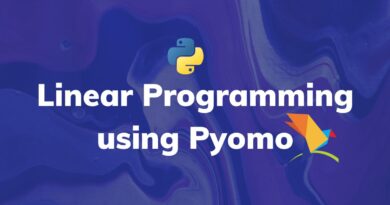
Demystifying Mathematical Concepts for Deep Learning
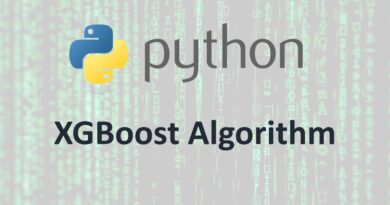
XGBoost Algorithm using Python

An official website of the United States government
Here’s how you know
Official websites use .gov A .gov website belongs to an official government organization in the United States.
Secure .gov websites use HTTPS A lock ( Lock A locked padlock ) or https:// means you’ve safely connected to the .gov website. Share sensitive information only on official, secure websites.
CMS Proposes New Policies to Support Underserved Communities, Ease Drug Shortages, and Promote Patient Safety
New Mandatory Model Proposed to Improve Health Outcomes Post-Surgery and Advance Climate Resiliency
Today, the Centers for Medicare & Medicaid Services (CMS) issued a proposed rule updating Medicare payments and policies for inpatient hospitals and long-term care hospitals. The proposed rule takes a variety of approaches to improving the health of people with Medicare by addressing social determinants of health, strengthening emergency preparedness, and improving maternal health. The fiscal year (FY) 2025 Inpatient Prospective Payment System (IPPS) and Long-Term Care Hospital Prospective Payment System (LTCH PPS) rule builds on the Biden-Harris Administration’s work to support historically underserved and under-resourced communities and promote value-based care.
“Hospitals should be a place you go into and get the care you need, regardless of whether you’re struggling to afford your rent, the color of your skin, or what else is going on in the world around you,” said U.S. Department of Health and Human Services Secretary Xavier Becerra. “The Biden-Harris Administration is doing everything in its power to ensure hospitals have the prescription drugs and supplies they need so providers can focus on what they do best – helping our loved ones be healthy.”
Rate Increases
The proposed increase in operating payment rates for certain acute care hospitals in FY 2025 is projected to be 2.6%. This applies to acute care hospitals that 1) receive CMS payments under the IPPS , 2) successfully participate in the Hospital Inpatient Quality Reporting program , and 3) are “meaningful” electronic health record users . This reflects the FY 2025 projected Hospital Market Basket Update of 3.0%, reduced by a projected 0.4 percentage point Productivity Adjustment for FY 2025. CMS expects this proposed increase in operating and capital IPPS payment rates, in addition to other changes, would generally increase hospital payments by $3.2 billion.
For Long-Term Care Hospitals (LTCHs), CMS proposes to increase the LTCH PPS standard federal payment rate by 2.8%. CMS expects LTCH payments to increase by 1.6%, or $41 million, primarily due to the proposed update to the rate partially offset by a projected decrease in high-cost outlier payments in FY 2025 compared to FY 2024.
“CMS is proposing changes that will create a more equitable and resilient health care system,” said CMS Administrator Chiquita Brooks-LaSure. “Our proposals around payment and quality focus on rewarding better outcomes and supporting hospitals in their efforts to reach underserved communities and meet their needs. We are also seeking public comment on additional efforts to drive improvements in access to quality care during pregnancy, childbirth, and postpartum.”
In the 2024 IPPS final rule, CMS finalized an increase in payments to hospitals when they care for individuals experiencing homelessness. Building on this policy and the Biden-Harris Administration’s initiative to address unsheltered homelessness, CMS is proposing to take an additional step and better account for the resources involved in furnishing care to individuals experiencing housing insecurity. CMS is also proposing to add new social determinants of health data elements into LTCH quality reporting, requiring LTCHs to report elements on housing, food and utility stability, and access to transportation, which are factors that influence the resources required for their care.
CMS is also promoting access to treatments that could help support rural and underserved communities. Increased new technology add-on payments proposed in the rule would help improve access to new gene therapy for sickle cell disease, which disproportionately impacts certain underserved populations. In addition, CMS is proposing a separate payment to small independent hospitals, including many rural hospitals, for establishing and maintaining access to a buffer stock of essential medicines to foster a more reliable and resilient supply of these medicines to help safeguard and improve the care hospitals can provide.
CMS’ graduate medical education program enhances the health care workforce and funds additional positions in hospitals serving underserved communities. To further improve access to behavioral health services and consistent with CMS’ overarching behavioral health strategy , the rule implements section 4122 of the Consolidated Appropriations Act, 2023, which requires that at least half of the 200 new graduate medical education slots made available in 2026 under the law go towards psychiatry or psychiatry subspecialties.
Emergency Preparedness
Building on lessons learned from the COVID-19 pandemic, CMS is proposing a permanent streamlined data reporting structure for COVID-19, influenza, and respiratory syncytial virus (RSV), with additional reporting that could be activated in the event of an emergency. The rule also proposes a new attestation-based measure to assess whether hospitals demonstrate a structure, culture, and leadership commitment that prioritizes patient safety.
“Hospitals play such a central role in the diverse communities they serve,” said Meena Seshamani, MD, PhD, CMS Deputy Administrator and Director of the Center for Medicare. “Our proposed payments to hospitals further recognize the cost of unmet social needs, advance access to innovative and essential treatments, expand the behavioral health workforce, and ultimately help provide hospitals the vital tools they need to better serve all communities.”
Testing Innovative Methods to Streamline Better Care at a Lower Cost
As part of this proposed rule, CMS is also proposing a mandatory model to test whether episode- based payments for five common, costly procedures would reduce Medicare expenditures while preserving or enhancing the quality of care. Building on lessons learned from previous models, the mandatory Transforming Episode Accountability (TEAM) Model would incentivize coordination between care providers during a surgery, as well as the services provided during the 30 days that follow, and require referral to primary care services to support continuity of care and drive positive long-term health outcomes. This model would complement other CMS value-based care initiatives by promoting collaboration with accountable care organizations.
“Before and after surgery, people on Medicare often experience fragmented care, especially following hospital discharge. This can lead to complications, prolonged recovery, unnecessary care, and even readmissions,” said Liz Fowler, CMS Deputy Administrator and Director of the CMS Innovation Center. “By bundling all the costs of care for an episode, this proposed rule can incentivize care coordination, improve patient care transitions, and decrease the risk of an avoidable readmission.”
TEAM would also support CMS and HHS efforts to improve quality of care by bolstering the health system’s climate resilience and sustainability. Individuals would be able to collect and voluntarily share greenhouse gas emissions data with CMS, and CMS would provide technical assistance to them to enhance organizational sustainability. Through TEAM, CMS would provide information to assist individuals in addressing threats to the health of individuals and the health care system presented by climate change.
Improving Maternal Health
As part of CMS’ ongoing efforts to drive improvements in access to quality care during pregnancy, childbirth, and postpartum, CMS is seeking public comment on potential solutions that can be implemented through the hospital Conditions of Participation (CoPs). Solutions aim to address well-documented concerns regarding maternal morbidity, mortality, disparities, and maternity care access in the United States without exacerbating access to care issues. In particular, poor maternal health access disproportionately affects non-Hispanic Black Individuals, American Indian and Alaska Native individuals, low-income individuals, and individuals with disabilities. In 2021, the maternal mortality rate for non-Hispanic Black individuals was 69.9 deaths per 100,000 live births, 2.6 times the rate for non-Hispanic White individuals. Rates for Black women were significantly higher than rates for White and Hispanic individuals.
Specifically, CMS is soliciting comments on what the overarching requirements and structure should be for a possible future obstetrical services CoP as it relates to organization, standards of practice, staffing for obstetrical services, delivery of services for obstetrical units, staff training, and the use of maternal morbidity and mortality data. CMS further solicits comments on how potential obstetrical services requirements could impact access to care and any potential unintended consequences of an obstetrical services CoP. In addition, the rule includes a request for information on the use of the Medicare IPPS payment rates for maternity care by other payers to inform CMS’ understanding of differences that may exist between the hospital resources required to provide inpatient pregnancy and childbirth services to Medicare patients as compared to non-Medicare patients.
The FY 2025 IPPS and LTCH PPS proposed rule 2025 has a 60-day comment period. The proposed rule can be downloaded from the Federal Register at: https://www.federalregister.gov/public-inspection/2024-07567/medicare-and-medicaid-programs-and-the-childrens-health-insurance-program-hospital-inpatient .
For a fact sheet on the IPPS/LTCH PPS proposed payment rule, visit: https://www.cms.gov/newsroom/fact-sheets/fy-2025-hospital-inpatient-prospective-payment-system-ipps-and-long-term-care-hospital-prospective
For a fact sheet on TEAM, visit: https://www.cms.gov/files/document/team-model-fs.pdf .
For frequently asked questions on TEAM, visit: https://www.cms.gov/team-model-frequently-asked-questions .
Sign Up for Email Updates
Receive the latest updates from the Secretary, Blogs, and News Releases
Subscribe to RSS
Receive latest updates

Related News Releases
Biden-harris administration finalizes rule expanding access to care and increasing protections for people with medicare advantage and medicare part d, hhs finalizes policies to make marketplace coverage more accessible and expand essential health benefits, hhs releases white paper focused on preventing drug shortages, media inquiries.
For general media inquiries, please contact [email protected] .
Exclusive: Tesla scraps low-cost car plans amid fierce Chinese EV competition
- Medium Text

- Entry-level Tesla car won’t be built, three sources tell Reuters
- Tesla to focus on self-driving taxis instead, sources said
- Strategy shift comes as Tesla faces competition from China EV makers including BYD
‘HALT ALL FURTHER ACTIVITIES’
Running late.
Stay up to date with the latest news, trends and innovations that are driving the global automotive industry with the Reuters Auto File newsletter. Sign up here.
Reporting by Hyunjoo Jin in San Francisco, Norihiko Shirouzu in Austin and Ben Klayman in Detroit. Editing by Marla Dickerson and Brian Thevenot.
Our Standards: The Thomson Reuters Trust Principles. New Tab , opens new tab

Thomson Reuters
Is the Detroit Bureau Chief and North American Transportation Editor, responsible for a team of about 10 reporters covering everything from autos to aerospace to airlines to outer space.

Business Chevron

Apple loses top phonemaker spot to Samsung as iPhone shipments drop, IDC says
Apple's smartphone shipments dropped about 10% in the first quarter of 2024, hurt by intensifying competition by Android smartphone makers aiming for the top spot, data from research firm IDC showed on Sunday.

Tesla needs to focus on the Model 2 instead of its risky robotaxi in order to reverse a 30% stock skid, Wedbush says
- A low-cost Model 2 is crucial to turning around Tesla stock, which is down 30% year-to-date, according to Wedbush.
- Analyst Dan Ives said there will be dark clouds hanging over Tesla if they abandon the Model 2.
- "If robotaxis is viewed as the 'magic model' to replace Model 2 we would view this as a debacle negative for the Tesla story," Ives said.

Tesla stock won't reverse it's massive sell-off until it commits to its original plans to develop a low-cost Model 2 vehicle, according to Wedbush analyst Dan Ives.
Tesla stock is down 30% year-to-date and is down 58% since its record high as concerns grow about weakening demand for its electric vehicles. The company's first-quarter deliveries came in well below expectations, and one analyst estimates that the company has unsold inventory of about 150,000 vehicles.
A recent report from Reuters said that Tesla is ditching plans for a low-cost Model 2 and will instead focus on the development of its Robotaxi platform, stoking concerns among Tesla bulls including Ives.
"If robotaxis is viewed as the 'magic model' to replace Model 2 we would view this as a debacle negative for the Tesla story. It would be a risky gamble if Tesla moved away from the Model 2 and went straight to robotaxis," Ives said in a Friday note.
For his part, Tesla CEO Elon Musk denied the Reuters report, though the company did announce an August 8 event to talk about its robotaxi developments.
Ives concerns on the potential pivot away from a Model 2 is predicated on his estimate that about 60% of Tesla's future growth will from from a low-cost vehicle that costs around $25,000. Meanwhile, Ives doesn't expect a fully autonomous robotaxi to be on the road until 2030, compared to a Model 2 that Ives estimates could arrive by 2026.
"Robotaxi is not the near-term answer to fill this growth gap while Model 2 is and this dynamic must be conveyed to the Street on the conference call April 23," Ives said.
Ultimately, the potential pivot away from a Model 2, which has long been part of Tesla's "Master Plan," would be just another concern for the bulls as the company deals with intense competition from China auto manufacturers and hybrid cars, as well as murmurs of Musk's AI efforts being separate from Tesla.
"With this quarter and unlike other times, Street criticism is warranted as growth has been sluggish and margins showing compression with China a horror show and competition increasing from all angles," Ives said. "For Musk, this is a fork in the road time to get Tesla through this turbulent period otherwise dark days could be ahead."
Wedbush reiterated its "Outperform" rating and $300 price target, representing potential upside of 73% from current levels.
- Main content

IMAGES
VIDEO
COMMENTS
What is Cost Assignment? Cost assignment is the allocation of costs to the activities or objects that triggered the incurrence of the costs. The concept is heavily used in activity-based costing, where overhead costs are traced back to the actions causing the overhead to be incurred. The cost assignment is based on one or more cost drivers.. Example of a Cost Assignment
Cost Assignment. Cost assignment is the process of associating costs with cost objects, such as products, services, departments, or projects. It encompasses the identification, measurement, and allocation of both direct and indirect costs to ensure a comprehensive understanding of the resources consumed by various cost objects within an organization.
The following are the main steps involved when allocating costs to cost objects: 1. Identify cost objects. The first step when allocating costs is to identify the cost objects for which the organization needs to separately estimate the associated cost. Identifying specific cost objects is important because they are the drivers of the business ...
Total number of customers who ordered either product are 18,000. This gives us a cost allocation base of $1.1 per customer ($19,700/18,000). A detailed cost assignment is as follows: Manufacturing overheads allocated to Tea & Cofee = $1.1×10,000. Manufacturing overheads allocated to Shakes = $1.1×8,000.
Direct materials for each pair of eyeglasses totaled $5. Here's what cost allocation would look like for Dave: Overhead: $5,000 ÷ $3,000 = $1.66 per pair. Direct costs: Direct materials: $5 per ...
Activity-Based Costing - ABC: Activity-based costing (ABC) is an accounting method that identifies the activities that a firm performs and then assigns indirect costs to products. An activity ...
A cost assignment model is proposed for the expansion of electrical transmission systems, based on the cooperation and interaction principles that are the foundation of the cooperative game theory. A solution algorithm is proposed that considers the development of independent cooperative games for each expansion segment and whose final assignment can be obtained by any game theory solution ...
for costs of different type. Methods of cost assignment are described. Keywords: production costs, cost calculation, cost assignment, cost management, corporate governance DOI: 10.3103/S1068798X22040074 Because markets are oversaturated and highly competitive today, we must constantly improve man-agement methods and consequently systems for calcu-
The paper (Evans et al. 2003) describes a cost assignment model for electrical transmission system expansion is using kernel theory. The study by Sauma and Oren (2007) addresses network expansion ...
The qualities of an effective cost model. To be effective, an organization's economic cost model must 1) be based on causality - costs must be driven, traced and attributed to activities based on cause-and-effect relationships - the stronger and more measurable the relationships, the better, 2) be predictive - business decisions impact ...
Assignment Method: A method of allocating organizational resources. The assignment method is used to determine what resources are assigned to which department, machine or center of operation in ...
This paper proposes a cost assignment model based on differentiating the set of required services a user consumes in a granular network architecture, to get a requested content. Unlike the flat ...
This section presents an example that shows how to solve an assignment problem using both the MIP solver and the CP-SAT solver. Example. In the example there are five workers (numbered 0-4) and four tasks (numbered 0-3).
This article describes the development of a transfer-cost-based logit assignment model for the Beijing Rail Transit Network (BRTN) using automated fare collection data. The BRTN is an ambitious rail transit network designed to be operations by the end of 2015 with 19 metro or light rail lines.
The aims of this paper is to clarify the theoretical aspects of the assignment problem and provide customization model that reduces the cost of resource allocation (Source) to a number of points ...
A cost assignment model based on differentiating the set of required services a user consumes in a granular network architecture, to get a requested content is proposed, focused on obtaining a variable pricing methodology that reflects the actual use of network resources that users utilize to get specific content. In a transforming, complex, and innovating telecommunications industry with ...
The first model is the uniform-weights model that assigns to every edge a uniform random weight in the range \(\{1, \ldots , 100000\}\). The second model is the uniform-low-high-weights model. This model randomly partitions the set of edges in two parts, the low-weights part and the high-weights part, according to a parameter \(p\in [0,1]\).
Following this introduction, a literature review is carried out to summarize relevant studies. After that, several models used in this study, including a travel cost model, a path choice model, and a flow assignment model, are presented. Then, the flow assignment results for BRTN are presented.
The task is to assign 1 job to 1 person so that the total number of hours are minimized. So, the first step in the assignment model would be to deduce all the numbers by the smallest number in the row. Hence, the smallest number becomes 0 and then we can target the zeroes to arrive at a conclusion.
What is Assignment Model? → Assignment model is a special application of Linear Programming Problem (LPP), in which the main objective is to assign the work or task to a group of individuals such that;. i) There is only one assignment. ii) All the assignments should be done in such a way that the overall cost is minimized (or profit is maximized, incase of maximization).
The objective is minimizing transportation cost. Assignment model is used in the following: To decide the assignment of jobs to persons/machines, the assignment model is used. To decide the route a traveling executive has to adopt (dealing with the order inn which he/she has to visit different places).
The model can be applied to human-machine task assignment decisions in industry and services. Humanities and Social Sciences Communications - Machine endowment cost model: task assignment ...
Now In this tutorial, we will focus on another model that comes under the class of linear programming model known as the Assignment problem. Its objective function is similar to transportation problems. ... # The cost data is made into a dictionary costs= makeDict([workers, jobs], costs, 0) # Creates a list of tuples containing all the possible ...
New Mandatory Model Proposed to Improve Health Outcomes Post-Surgery and Advance Climate Resiliency. ... 1.6%, or $41 million, primarily due to the proposed update to the rate partially offset by a projected decrease in high-cost outlier payments in FY 2025 compared to FY 2024.
Tesla's cheapest current model, the Model 3 sedan, retails for about $39,000 in the United States. The now-defunct entry-level vehicle, sometimes described as the Model 2, was expected to start ...
The state of the Model 3 vs Model 2: A new Rear Wheel Drive Model 3 in inventory starts at about $35,000. With a $7,500 incentive distributed over the term of a 36-month lease and 10,000 miles per ...
The company implemented price cuts of about $5,000 for some Model Y vehicles this week. Separately, a report said Tesla was scrapping its low-cost Model 2 plans. NEW LOOK
Ives concerns on the potential pivot away from a Model 2 is predicated on his estimate that about 60% of Tesla's future growth will from from a low-cost vehicle that costs around $25,000.